What is a Management Representation Letter?
Getting through financial audits can be frustrating for companies, especially when asked to provide management representation letters.
This article will clarify exactly what a management representation letter is, why auditors request them, what should be included, and provide examples to make the process smooth and compliant.
You'll learn the purpose of these letters, see template examples, understand international audit standards, and gain key takeaways to improve financial reporting at your organization.

Introduction to Management Representation Letters
A management representation letter is a formal document signed by a company's senior management that is provided to external auditors. It contains certain written representations that auditors require in order to complete an audit and form an opinion on the company's financial statements.
Defining the Management Representation Letter in Audit Context
The management representation letter serves an important role within the financial statement audit process. Auditors use it as audit evidence to support their assessment of whether the financial statements are free of material misstatement. Specifically, auditors request written confirmation from management regarding the accuracy and completeness of information provided during the audit. This includes representations related to:
- The financial statements and adequacy of disclosures
- Proper recording of transactions and account balances
- Internal controls over financial reporting
- Compliance with laws and regulations
By obtaining these written representations from management, auditors gain additional audit evidence to complete their testing and analysis. The management representation letter also outlines management's responsibilities under the audit engagement.
Essential Components of a Management Representation Letter
A standard management representation letter contains certain key statements that auditors rely upon. These include:
- Financial statement disclosures : Confirmation that management has provided the auditors with all relevant information and access needed to perform the audit.
- Recognition, measurement and disclosure : Assertion that the financial statements comply with the applicable financial reporting framework and standards.
- Non-compliance : Disclosure of any non-compliance with laws and regulations.
- Litigation and claims : Details of any actual, pending or threatened litigation and claims that could impact the financial statements.
The letter will also typically list areas of significant estimates and judgments made by management in preparing the financial statements. For example, allowances for doubtful accounts, asset impairment assessments, and assumptions used in valuation models.
By obtaining written representation on these matters, auditors gain evidence to issue their audit opinion. The management representation letter should be signed by the CEO and CFO or equivalent members of senior management.
Legal and Ethical Implications of Management Representations
Signing a management representation letter has legal and ethical implications. Management must ensure representations made to the auditors are accurate and made in good faith. Intentionally misrepresenting information or omitting relevant details could constitute fraud and result in legal liability.
Auditors also have a duty to assess the reasonableness of management representations and corroborate them with other audit evidence. Relying solely on management representations without further verification could call into question the quality of the audit.
Overall, the management representation letter facilitates open and transparent communication between management and auditors. It serves as a legally binding confirmation of management's fulfillment of its financial reporting responsibilities.
What is the main purpose of a management representation letter?
The main purpose of a management representation letter is to obtain written confirmation from management that they have fulfilled their responsibility for the fair presentation of the financial statements. This letter documents that management has provided the auditors with all relevant information and access needed to conduct the audit.
Some key purposes of the management representation letter include:
Confirming management's responsibility for the preparation and fair presentation of the financial statements in accordance with the applicable financial reporting framework (e.g. GAAP or IFRS).
Affirming that management has provided the auditors with all relevant information and access to records, documentation and personnel that is necessary for the audit.
Disclosing any instances of fraud involving management, employees with significant internal control roles, or those that cause a material misstatement of the financial statements.
Presenting details on matters that impact the financial statements - such as plans or intentions that may affect asset/liability carrying values, information about related parties, contingencies, subsequent events, etc.
Stating that all transactions have been recorded and are reflected in the financial statements. This helps confirm completeness and cut-off assertions.
So in summary, the management representation letter serves as important audit evidence that validates information provided by management to the auditors. It also formally documents management's responsibilities and representations concerning the financial statements.
What is the meaning of management representation?
Management representation refers to written confirmation provided by management of an entity to the auditors regarding the accuracy and completeness of financial statements and adequacy of internal controls.
The management representation letter is a key audit evidence prepared at the completion of the audit process. It contains management's assertions regarding:
- Fair presentation of financial statements
- Completeness of information provided to auditors
- Proper accounting policies used
- Reasonableness of significant estimates made
Essentially, through this letter, management takes responsibility for the fair presentation of the financial statements. They confirm to the auditors that they have fulfilled their financial reporting responsibilities.
The management representation letter covers all periods encompassed by the audit report and is dated the same date as the completion of audit fieldwork. It is addressed to the engagement partner and signed by those with appropriate responsibilities for the financial statements, usually the Chief Executive Officer and Chief Financial Officer.
By obtaining written representations from management, the auditors demonstrate they have obtained sufficient appropriate audit evidence to support their audit opinion. The representations serve as necessary supplementary corroboration of management's oral assertions made during the audit.
In summary, the management representation letter is a written statement from management provided to the auditors as part of the audit evidence. It confirms management's compliance with financial reporting responsibilities to enable auditors to form their audit opinion.
What is an example of a management representation letter?
We are providing this letter in connection with your audit of the cost representation statement of USAID resources managed by (Client Name) under Contract No. XXX “Project Name” for the period MM/DD/YY to MM/DD/YY.
We confirm, to the best of our knowledge and belief, the following representations made to you during your audit:
- We have made available to you all financial records and related data, including service auditor reports.
- There have been no communications from regulatory agencies concerning noncompliance with or deficiencies on financial reporting practices.
- We have no knowledge of any known or suspected fraudulent financial reporting or misappropriation of assets involving management or employees with significant roles in internal control.
- We have disclosed to you the results of our assessment of risk that the cost representation statement may be materially misstated as a result of fraud.
- There are no material transactions that have not been properly recorded in the accounting records.
- We believe the effects of any uncorrected financial statement misstatements aggregated by you are immaterial.
- We have disclosed all liabilities, both actual and contingent.
- There are no violations or possible violations of laws or regulations whose effects should be considered.
We confirm that the representations we have made to you during your audit are complete, truthful, and accurate.
Sincerely, [Signature] [Client Representative Name and Title]
What is the difference between management letter and management representation letter?
The key differences between a management letter and a management representation letter in an audit are:
Focus : The management letter focuses on identifying weaknesses and areas of improvement in the company's financial reporting process and internal controls. Management representation, on the other hand, focuses on providing evidence of management's understanding and support of the audit process.
Purpose : The purpose of a management letter is to communicate deficiencies in internal control and make suggestions for improvements. The purpose of a management representation letter is to confirm certain information that the auditors have requested from management.
Content : A management letter contains comments and recommendations from the auditor about issues encountered during the audit. A management representation letter contains specific statements by management regarding matters such as the fairness of financial statements.
Timing : A management letter is typically issued after the audit report while a management representation letter is obtained during the audit.
In summary, while both letters relate to the audit process, the management letter aims to provide suggestions for improvement while the management representation letter serves as audit evidence regarding management's assertions. The management representation letter supports the audit by confirming the accuracy of the financial statements.
sbb-itb-beb59a9
The purpose and importance of management representation letters.
Management representation letters serve several key purposes in the audit process. Most importantly, they provide additional audit evidence to support the auditor's opinion on the financial statements.
Reinforcing the Auditor's Collection of Audit Evidences
Management representation letters reinforce the audit evidence the auditor has already obtained throughout the audit. As outlined in ISA 500 Audit Evidence, auditors must obtain sufficient appropriate evidence to support their opinion. The letter serves as written representation from management on important assertions related to the financial statements. This includes the completeness and accuracy of information provided to the auditor.
Management's Accountability for Financial Reporting
Additionally, the letter highlights management's responsibilities over financial reporting. Management, not the auditor, is responsible for the preparation and fair presentation of the financial statements. The representation letter formally documents that management has fulfilled these duties, a key assertion needed to issue an audit opinion.
Assurance on Contingent and Off-Balance-Sheet Liabilities
Auditors also rely on management's representations on significant estimates and disclosures. This includes assurance from management that the financial statements appropriately reflect contingent liabilities and off-balance-sheet liabilities in accordance with the applicable financial reporting framework.
In summary, representation letters serve as a final confirmation from management that they have fulfilled their financial reporting responsibilities. The letters provide key audit evidence and accountability to support the auditor's work in accordance with auditing standards.
Drafting a Management Representation Letter: Best Practices
A management representation letter is an important part of the audit process. It documents certain written representations made by management to the auditors regarding the company's financial statements.
Drafting an effective management representation letter requires following several best practices:
Management Representation Letter Template: A Starting Point
When creating a management representation letter, it's best to start with a template. This ensures all relevant topics are covered such as:
- Management's responsibility for the preparation and fair presentation of the financial statements
- Availability of all financial records and related data
- Completeness of information provided regarding transactions and events
- Disclosure of all liabilities, both actual and contingent
- Non-existence of any fraud or illegal acts
Tailor the template to the specific circumstances and transactions of the business. But the template establishes a solid foundation.
Who Should Sign the Management Representation Letter
Typically the management representation letter should be signed by:
- The CEO or Managing Director
- The CFO or Financial Controller
This demonstrates the company's overall governance has reviewed the representations and attests to their validity and completeness.
In some cases, representation from heads of divisions or departments may also be necessary regarding transactions or activities under their specific purview.
Customizing Representations to Reflect Unique Organizational Circumstances
While a template is useful, each management representation letter must be customized to reflect the distinct transactions and activities of the organization. Specifically call out areas the auditors have highlighted as potential risks or requiring further representations.
For example, if the company underwent a major acquisition, restructuring, or system implementation, representations would be needed to address the associated impacts and risks regarding financial reporting.
The management representation letter is not a mere formality. It serves as an indispensable record of the critical dialogue between management and auditors. Following these best practices helps craft letters that clearly communicate important representations.
Management Representation Letter Samples and Examples
Management representation letters are important documents in the financial audit process. They contain written confirmation from management about the accuracy and completeness of financial statements and disclosures. Reviewing examples can help companies understand what to include in their own letters.
Analyzing a Management Representation Letter Sample
Here is an excerpt from a sample management representation letter:
We acknowledge our responsibility for the fair presentation in the financial statements of financial position, results of operations, and cash flows in conformity with U.S. generally accepted accounting principles (GAAP). We have provided you with unrestricted access to persons within the Company...
This excerpt demonstrates several key elements:
- Acknowledgment of management's responsibility for financial statements conforming to GAAP
- Confirmation that auditors had full access to people and information
Other standard inclusions are statements around contingent liabilities, litigation matters, plans or intentions that may affect assets or liabilities, and confirmation that appropriate disclosures have been made.
Analyzing examples helps identify customary terms to include.
Management Representation Letter PDF: Accessibility and Format
Management representation letters are often provided to auditors as PDF files. This locked, uneditable format:
- Facilitates easy sharing of the definitive final version
- Allows clear version control with digital signatures
- Enables reliable long-term archival storage
PDF format removes ambiguity around which representation letter version was relied upon.
Real-World Examples: Complex Issues
Consider these excerpts from real-world representation letters:
"The restructuring provision of $20 million represents our best estimate of costs to complete the plant closure based on current plans..."
"We confirm that we have properly recorded and disclosed the acquisition of Company XYZ in the financial statements..."
These excerpts demonstrate how companies transparently address complex real situations like restructurings or major transactions in the representation letter.
Real examples provide assurance that the company has appropriately considered complex accounting matters.
Comparing Management Letters and Management Representation Letters
Management letters and management representation letters serve important but distinct purposes in the audit process.
Management Letter vs Management Representation Letter: Clarifying the Distinction
A management letter communicates deficiencies or recommendations for improvement identified by the auditor during the audit. These may relate to internal controls, processes, or compliance issues that could be made more effective.
In contrast, a management representation letter obtained near the end of an audit contains specific written representations from management about the accuracy and completeness of the financial statements and disclosures. Common representations confirm that:
- Financial statements are fairly presented
- Significant assumptions used by management are reasonable
- All relevant information has been provided to the auditor
- There are no undisclosed side agreements or contingencies
While management letters offer suggestions, representation letters confirm critical facts underlying the audit.
The Role of the Auditor in Relation to Management Representations
Auditors use both tools to fulfill their responsibilities:
Management letters reflect the auditor's duty to communicate control deficiencies to those charged with governance. This allows the entity to take timely remedial action.
Representation letters provide audit evidence as part of the auditor's risk assessment procedures under auditing standards. They represent a form of documentary evidence about management's intents, knowledge and accuracy of the financial statements.
If management were unwilling to sign the representation letter, the auditor would need to reconsider their audit opinion.
Impact on Audit Opinions and Auditor's Reports
The management letter has no direct bearing on the auditor's opinion, unless the issues it raises cast doubt on the fairness of the financial statements.
However, matters raised in the representation letter directly relate to the audit evidence obtained. If management refuses to sign the letter, the auditor would likely issue a qualified opinion or disclaimer of opinion on the financial statements due to the limitation on audit scope and evidence.
In summary, while management letters offer helpful recommendations, representation letters provide the auditor written confirmation of critical information pertinent to the audit itself. Both play key roles in the audit process.
International Standards on Auditing: ISA 580 Management Representations
The International Standards on Auditing (ISA) provide a framework for conducting high quality external audits. ISA 580 specifically focuses on obtaining appropriate written representations from management to support the audit evidence gathered.
Understanding ISA 580 and Its Relevance to Management Representation Letters
ISA 580 outlines the auditor's responsibilities for obtaining written representations from management to confirm certain matters or to support other audit evidence. Some key points:
- Requires auditors to obtain written representations from management that they have fulfilled their financial reporting responsibilities
- Covers areas like recognition, measurement, presentation, and disclosure of information as per the financial reporting framework
- Helps auditors obtain confirmation on matters material to the financial statements, like the completeness of information provided
- Allows for detection of material misstatements due to fraud
By adhering to ISA 580, auditors can ensure management representation letters align with the necessary audit evidence requirements.
Compliance with International Standards on Auditing
It is critical that management representation letters comply with ISA guidelines, including:
- Obtaining representations from appropriate individuals : Those with overall responsibility for financial reporting, such as the CEO and CFO
- Written format : Printed on the organization's letterhead and signed by hand
- Date : No earlier than the date of the audit report
- Wording : Clear acknowledgement of responsibilities, accuracy of information provided, etc.
Strict compliance ensures the representations constitute valid and appropriate audit evidence as per ISA 500.
Case Studies: Adherence to ISA 580 in Practice
Company A - Drafted a management representation letter that was vague, unsigned, and outdated. By not adhering to ISA 580, they had to invest additional time and resources to obtain proper representations.
Company B - Carefully followed ISA 580 requirements. The CFO and CEO signed off on a letter confirming completeness of information and awareness of responsibilities. This aligned smoothly with the audit process.
As exemplified, non-compliance ultimately wastes time and resources. Whereas alignment with ISA 580 standards helps streamline external audits.
Conclusion and Key Takeaways
Management representation letters are important, standard audit evidence that reduce risk. They signify management's representations concerning the financial statements and accountability for internal controls, fraud, and information provided to auditors.
Summarizing the Role of Management Representation Letters in Audits
Management representation letters summarize key information and representations from management to auditors. They serve several key functions:
- Confirm management's responsibility for the preparation and fair presentation of the financial statements
- Disclose any issues or deficiencies in internal controls
- Affirm that all relevant information has been provided to auditors
- Highlight any fraud, illegal acts, or noncompliance with laws and regulations
By obtaining these written representations, auditors reduce engagement risk and confirm their understanding of management's views and positions.
Final Thoughts on Best Practices and Compliance
It is critical that management representation letters adhere to regulations and professional standards. Key best practices include:
- Ensuring the letter is dated as of the date of the auditor's report
- Having the letter signed by those with appropriate responsibilities and authority
- Disclosing all relevant issues completely and accurately
- Following the guidelines and requirements outlined in ISA 580 and other applicable standards
Diligent compliance promotes accuracy, transparency, and accountability.
Encouraging Diligence and Transparency in Financial Reporting
At their core, management representation letters aim to foster diligent, truthful, and transparent financial reporting. By eliciting key written representations from management, auditors promote an environment of responsibility, compliance, and ethical practice. This ultimately supports the accuracy and reliability of financial statements for all stakeholders.
Related posts
- What is Transfer Pricing?
- Related Party Disclosures in Financial Statements
- Statutory Audit vs Internal Audit
- Financial Statement Presentation: Structure and Requirements
How Is Casualization Affecting Accounting Firms?

How to Fill Form 5329: Additional Taxes on Retirement Plans and Tax-Favored Accounts
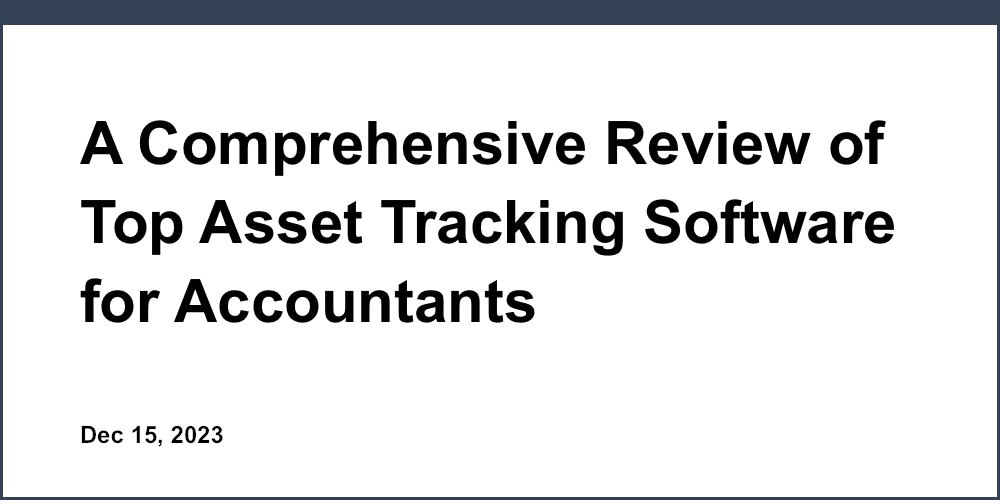
A Comprehensive Review of Top Asset Tracking Software for Accountants
We've received your job requirements, and our team is working hard to find the perfect candidate for you. If you have more job openings available, feel free to submit another job description, and we'll be happy to assist you.
- Submit a New Job Description

Unlock the Talent Your Business Deserves
Hire Accounting and Finance Professionals from South America.
- Start Interviewing For Free

Management Representation Letter: Format, Content, Signature
Home » Bookkeeping » Management Representation Letter: Format, Content, Signature
As of 2019, the FASB requires publicly traded companies to prepare financial statements following the Generally Accepted Accounting Principles (GAAP). Auditors are required by professional standards to report, in writing, internal control matters that they believe should be brought to the attention of those charged with governance (the board). Generally, if your auditor is going to put an internal control matter in a letter, they have assessed that the matter was the result of a deficiency in internal controls. This is an important part of that audit that the profession does not take lightly.
One common example of a deficiency in internal control that’s severe enough to be considered a material weakness or significant deficiency is when an organization lacks the knowledge and training to prepare its own financial statements, including footnote disclosures. The “SAS 115” letter is usually issued when any significant deficiencies or material weaknesses would have been discussed with management during the audit, but are not required to be communicated in written form. In performing an audit of your Plan’s internal controls and plan financials, your auditors are required to obtain an understanding of the Plan’s operations and internal controls.
A management representation letter is a form letter written by a company’s external auditors, which is signed by senior company management. The letter attests to the accuracy of the financial statements that the company has submitted to the auditors for their analysis. The CEO and the most senior accounting person (such as the CFO) are usually required to sign the letter. The letter is signed following the completion of audit fieldwork, and before the financial statements are issued along with the auditor’s opinion. External auditors follow a set of standards different from that of the company or organization hiring them to do the work.
In doing so, they may become aware of matters related to your Plan’s internal control that may be considered deficiencies, significant deficiencies, or material weaknesses. Audits performed by outside parties can be extremely helpful in removing any bias in reviewing the state of a company’s financials. Financial audits seek to identify if there are any material misstatements in the financial statements. An unqualified, or clean, auditor’s opinion provides financial statement users with confidence that the financials are both accurate and complete. External audits, therefore, allow stakeholders to make better, more informed decisions related to the company being audited.
The representation should reaffirm your client’s understanding of all significant terms in the engagement letter. A relevant assertion is a financial statement assertion that has a reasonable possibility of containing a misstatement or misstatements that would cause the financial statements to be materially misstated.
The purpose of an internal audit is to ensure compliance with laws and regulations and to help maintain accurate and timely financial reporting and data collection. It also provides a benefit to management by identifying flaws in internal control or financial reporting prior to its review by external auditors.
Depending on materiality and other qualitative factors, the auditors will consider the deficiency to be an “other” matter, significant deficiency, or material weakness. The auditor has discretion on which category the deficiency falls into, but are otherwise required to use the standard wording and definitions in the letter.
It serves to document management’s representations during the audit, reducing misunderstandings of management’s responsibilities for the financial statements. The definition of good internal controls is that they allow errors and other misstatements to be prevented or detected and corrected by (the nonprofit’s) employees in the normal course of performing their duties.

Material weaknesses or significant deficiencies may exist that were not identified during the audit, and auditors are required to disclose this in their written communication. The auditor’s report contains the auditor’s opinion on whether a company’s financial statements comply with accounting standards. The results of the internal audit are used to make managerial changes and improvements to internal controls.
What is a management representation letter?
A management representation letter is a form letter written by a company’s external auditors, which is signed by senior company management. The letter attests to the accuracy of the financial statements that the company has submitted to the auditors for their analysis.
A control objective provides a specific target against which to evaluate the effectiveness of controls. Management representation is a letter issued by a client to the auditor in writing as part of audit evidences. The representations letter must cover all periods encompassed by the audit report, and must be dated the same date of audit work completion.
These types of auditors are used when an organization doesn’t have the in-house resources to audit certain parts of their own operations. The assertion of completeness is an assertion that the financial statements are thorough and include every item that should be included in the statement for a given accounting period. The assertion of completeness also states that a company’s entire inventory, even inventory that may be temporarily in the possession of a third party, is included in the total inventory figure appearing on a financial statement. The compilation standards do not require practitioners to obtain a management representation letter, but this does not mean that it’s not a prudent thing to do. Obtaining a representation letter helps to ensure your client understands the services that you have provided, the limitations on the work you have completed, and that they are ultimately responsible for their financial statements.
The biggest difference between an internal and external audit is the concept of independence of the external auditor. When audits are performed by third parties, the resulting auditor’s opinion expressed on items being audited (a company’s financials, internal controls, or a system) can be candid and honest without it affecting daily work relationships within the company. Auditors evaluate each internal control deficiency noted during the audit to determine whether the deficiency, or a combination of deficiencies, is severe enough to be considered a material weakness or significant deficiency. In assessing the deficiency, auditors consider the magnitude of potential misstatements of your financial statements as well as the likelihood that internal controls would not prevent or detect and correct the misstatements.
Representation to Management
- In an audit of financial statements, professional standards require that auditors obtain an understanding of internal controls to the extent necessary to plan the audit.
- written confirmation from management to the auditor about the fairness of various financial statement elements.
- Auditors use this understanding of internal controls to assess the risk of material misstatement of the financial statements and to design appropriate audit procedures to minimize that risk.
The idea behind a management representation letter is to take away some of the legal burdens of delivering wrong financial statements from the auditor to the company. A material weakness is a deficiency, or combination of deficiencies, in internal control, such that there is a reasonable possibility that a material misstatement of the entity’s financial statements will not be prevented, or detected and corrected on a timely basis. Internal auditors are employed by the company or organization for whom they are performing an audit, and the resulting audit report is given directly to management and the board of directors. Consultant auditors, while not employed internally, use the standards of the company they are auditing as opposed to a separate set of standards.
If the auditors detect an unexpected material misstatement during your audit, it could indicate that your internal controls are not functioning properly. Conversely, lack of an actual misstatement doesn’t necessarily mean that your internal controls are working.
The determination of whether an assertion is a relevant assertion is based on inherent risk, without regard to the effect of controls. Financial statements and related disclosures refers to a company’s financial statements and notes to the financial statements as presented in accordance with generally accepted accounting principles (“GAAP”). References to financial statements and related disclosures do not extend to the preparation of management’s discussion and analysis or other similar financial information presented outside a company’s GAAP-basis financial statements and notes.
External audits can include a review of both financial statements and a company’s internal controls. When a company’s financial statements are audited, the principal element an auditor reviews is the reliability of the financial statement assertions. In the United States, the Financial Accounting Standards Board (FASB) establishes the accounting standards that companies must follow when preparing their financial statements.
In an audit of financial statements, professional standards require that auditors obtain an understanding of internal controls to the extent necessary to plan the audit. Auditors use this understanding of internal controls to assess the risk of material misstatement of the financial statements and to design appropriate audit procedures to minimize that risk. written confirmation from management to the auditor about the fairness of various financial statement elements. The purpose of the letter is to emphasize that the financial statements are management’s representations, and thus management has the primary responsibility for their accuracy.
Expert Social Media Tips to Help Your Small Business Succeed
This letter is useful for setting the expectations of both parties to the arrangement. Almost all companies receive a yearly audit of their financial statements, such as the income statement, balance sheet, and cash flow statement. Lenders often require the results of an external audit annually as part of their debt covenants. For some companies, audits are a legal requirement due to the compelling incentives to intentionally misstate financial information in an attempt to commit fraud.
Management representation letter
As long as there’s a reasonable possibility for material misstatement of account balances or financial statement disclosures, your internal controls are considered to be deficient. An auditor typically will not issue an opinion on a company’s financial statements without first receiving a signed management representation letter. An audit engagement is an arrangement that an auditor has with a client to perform an audit of the client’s accounting records and financial statements. The term usually applies to the contractual arrangement between the two parties, rather than the full set of auditing tasks that the auditor will perform. To create an engagement, the two parties meet to discuss the services needed by the client.
As a result of the Sarbanes-Oxley Act (SOX) of 2002, publicly traded companies must also receive an evaluation of the effectiveness of their internal controls. As noted above, an internal control letter is usually the result of a deficiency in internal controls discovered during the audit, most commonly from a material audit adjustment. The letter includes required language regarding the severity of the deficiency.
Real Business Owners,
The parties then agree on the services to be provided, along with a price and the period during which the audit will be conducted. This information is stated in an engagement letter, which is prepared by the auditor and sent to the client. If the client agrees with the terms of the letter, a person authorized to do so signs the letter and returns a copy to the auditor. By doing so, the parties indicate that an audit engagement has been initiated.
Also, the letter provides supplementary audit evidence of an internal nature by giving formal management replies to auditor questions regarding matters that did not come to the auditor’s attention in performing audit procedures. Some auditors request written representations of all financial statement items. All auditors require representations regarding receivables, inventories, plant and equipment, liabilities, and subsequent events. The letter is required at the completion of the audit fieldwork and prior to issuance of the financial statements with the auditor’s opinion.
Auditors spend a lot of time assessing how material audit adjustments and immaterial adjustments that have the potential to be material will be communicated in the internal control letter. The Representation Letter is issued with the draft audit and is required by auditing standards to finalize the audit. The Representation Letter is a letter from the Association to our firm confirming responsibilities of the board and management for the financial statements, as well as confirming information provided to us during the audit. The President or Treasurer and Management need to sign the Representation Letter and return it back to our office within 60 days from the date the draft audit was issued. Representation Letters received after the 60-day mark may result in additional auditing procedures in order to finalize the audit and comply with auditing standards at an additional expense to the Association.
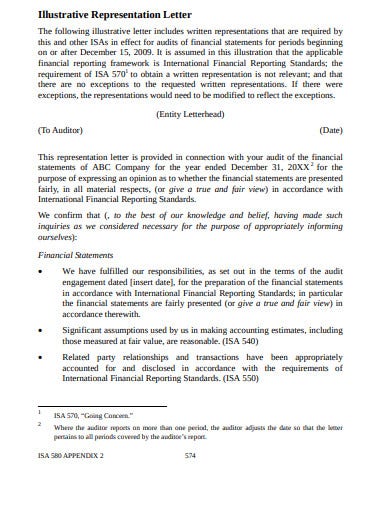

The Role of Management Representation Letters in Audits
Explore the significance of management representation letters in audits, their preparation process, and common misunderstandings in this insightful overview.

Audits are a critical component of financial transparency and corporate governance. Within this process, management representation letters play an essential role that often goes unnoticed by those outside the accounting profession.
These documents serve as a written assertion from company management regarding the accuracy and completeness of information provided to auditors. Their importance cannot be overstated, as they underpin the trust and integrity of the entire audit process.
Purpose of Management Representation Letters
Management representation letters serve as a formal attestation from a company’s executives to the auditors, confirming the veracity of the financial statements and disclosures. These letters are a professional necessity, providing auditors with assurances that all relevant information has been disclosed. They are a testament to the management’s confidence in their financial reporting and their commitment to transparency.
The letters also support the auditor’s assessment of the risk of material misstatement in the financial statements. By obtaining written confirmations, auditors can reduce the extent of substantive testing required, which can streamline the audit process. This efficiency is beneficial for both the auditors and the company being audited, as it can lead to a more focused and timely audit.
Moreover, these letters can be a safeguard against potential disputes or legal issues that may arise post-audit. In instances where inaccuracies are discovered after the audit has been completed, the letter serves as a record that management had affirmed the completeness and accuracy of the information at the time of the audit. This can be particularly important in cases where financial statements are later found to be fraudulent or misleading.
Preparing a Management Representation Letter
The preparation of a management representation letter is a meticulous process that requires careful attention to detail and a comprehensive understanding of the company’s financial affairs. It is a collaborative effort between management and auditors to ensure that all significant information is accurately reflected.
Necessary Statements Identification
Identifying the necessary statements to be included in the management representation letter is a foundational step. These statements typically cover a range of areas such as the acknowledgment of responsibility for the fair presentation of financial statements in conformity with the applicable financial reporting framework, confirmation of the completeness of the information provided, and the disclosure of any subsequent events that may affect the financial statements. Management must also confirm that they have made the auditors aware of all known instances of fraud or suspected fraud affecting the company. The identification process is guided by professional auditing standards, such as those issued by the American Institute of Certified Public Accountants (AICPA) or the International Auditing and Assurance Standards Board (IAASB).
Information Completeness
Ensuring the completeness of information in the management representation letter is paramount. This involves a thorough review of the company’s financial records and disclosures to verify that all relevant information has been included. Management must confirm that all transactions have been recorded and are reflected in the financial statements. They must also attest to the appropriateness of the accounting policies applied and whether any unrecorded liabilities exist. This step is critical as it directly impacts the credibility of the financial statements and the audit’s outcome. The completeness of information also extends to the disclosure of any related party transactions and the effects of any uncorrected misstatements identified during the audit.
Review and Approval
The final step in preparing a management representation letter is the review and approval by the company’s top executives, typically the CEO and CFO. This review process is not merely a formality; it is an active examination to ensure that the letter accurately reflects the company’s financial position and that all statements can be substantiated. The approval signifies that management has taken ownership of the representations made within the letter. It is also an opportunity for management to discuss any concerns or clarifications with the auditors before the letter is finalized. The signed letter is then dated as of the last day of fieldwork, signifying that the representations are relevant and up-to-date with the findings of the audit.
Misconceptions About Representation Letters
A common misunderstanding about management representation letters is that they are a mere formality, a routine sign-off without substantial impact on the audit’s outcome. This view underestimates the letter’s function as a document that auditors rely upon for assurance beyond the financial data and records they examine. It is not simply a procedural step, but a declaration that can have legal implications for the signatories, particularly if it is later found that the information provided was knowingly false or misleading.
Another misconception is that the letter is solely for the benefit of the auditors. While it is true that auditors use these letters to corroborate information and reduce audit risk, the benefits extend to the management and the company as well. The process of preparing the letter encourages a comprehensive review of the company’s financial disclosures, which can lead to the identification and rectification of errors before the audit is finalized. This proactive approach can enhance the quality of financial reporting and potentially prevent future financial discrepancies.
There is also a belief that once the letter is signed and the audit is complete, the responsibilities of management in relation to the representations made are concluded. However, the representations have a lasting effect, as they are a testament to the financial condition of the company at the point of the audit. Should any issues arise from the period covered by the audit, the representations made can be scrutinized for their accuracy and completeness.
How External Users Leverage Accounting Information
Strengthening your control environment for financial integrity, you may also be interested in..., the impact of ey's organizational split on the professional services industry, effective strategies for auditing accounts receivable, ensuring financial integrity with bank reconciliation, due care principle in financial best practices.

- Owner’s Profile
- Homeowner’s Association
- Reserve Study Services
- Individuals
- New! Associations & Taxes
- Treasurer’s Handbook
- The Condo Book

Understanding the Representation Letter
Written by David T. Schwindt, CPA
What is a Representation Letter? As a Board member or manager of a community management company, you may be asked to sign a representation letter at the conclusion of an audit or a reviewed financial statement engagement. Although the letter is from the Association/management company to the CPA, the CPA will generally draft the letter on behalf of the Association. The letter includes certain assertions about the Association during the period covered by the financial statements. Those assertions include but are not limited to the following:
- The Association/management company has provided the CPA with all requested financial information.
- The Association/management company has disclosed all related party transactions.
- The Association/management company has disclosed all existing and potential litigation.
- The Association/management company has disclosed any knowledge of fraud or financial irregularities.
- The Association takes responsibility for the design and implementation of a system of internal controls. These controls include but are not limited to safeguarding assets, approving transactions and minimizing the risk of someone perpetrating a theft of money or information and not being discovered in a reasonable amount of time. Although the Board is ultimately responsible for this activity, it is common that Boards rely upon the management company to assist in this responsibility.
In some instances, the management company may sign a different representation letter because the responsibilities are slightly different.
Why is the Representation Letter necessary? The American Institute of Certified Public Accounts has determined that those charged with governance (the board of directors and the community management company) should take responsibility for the assertions in the representation letter. CPAs are mandated to obtain the signed representation letter before issuing the final financial statements.
Who should sign the representation letter? Most often, the Board Chair, Board Treasurer and community manager signs the letter.
When does the Representation Letter need to be signed? The letter needs to be signed at the end of the engagement generally after a draft of the financial statements are issued. Schwindt & Co combines the representation letter with the management letter comments and proposed adjusting journal entries for ease of review. When the signed document is received by our office, we are then able to issue the final financial statements.
Should a new Board member or community manager who was not involved with Association management or governance during the period under audit or review be hesitant about signing the representation letter? This is a common question and the answer is simple. No! The first paragraph of the representation states that whoever signs the letter does so based on the best knowledge and belief of the person signing. This means that even though you may be new to the Board or management company, it is perfectly fine to sign the letter because you will only be asserting to issues that you have knowledge. It is very common for Board members/managers to sign a representation letter even though they were not involved during the period being audited or reviewed.
- Representation letters are normal and required before the issuance of audited/reviewed financial statements.
- Board members are only asserting to issues that they are aware of and new board members and managers frequently are required to sign representation letters.
- The Board Chair, Board Treasurer and community manager are generally required to sign the representation letter.
Questions regarding this article may be directed to David T. Schwindt, CPA at Schwindt & Co. (503) 227-1165.

12300 SE Mallard Way, Suite 275 Milwaukie, OR 97222 (503) 227-1165
OFFICE HOURS
Monday-Thursday, 9 am – 3 pm Friday, By Appointment Only
Copyright 2017-2024 Schwindt & Co. | All Rights Reserved
What is the management representation letter?
Introduction.
External auditors have the responsibility of writing a form letter which is more formally known as the management representation letter. This management representation letter is supposed to be signed by the senior management of the organization.
The accuracy of the financial statements is crucial when it comes to management representation letter because these are the statements that the audit firm submitted to the auditors for analysis.
The senior management team of the company – most likely the CEO or the CFO- has the responsibility of signing this letter and moving ahead with the process.
As soon as the audit work is completed, the process is then followed by the official signing of the management representation letter. The signing of the letter takes place before the issuance of financial statements along with the auditor’s final opinion on the whole audit process.
So what does a management representation letter comprises? To start with, the letter is supposed to state that all the information submitted is completely accurate and there have been no errors in its collection.
It also states the disclosure of all material information to the auditors involved in the project. Audit evidence is the sole purpose in the organization of such a letter so the auditors have a written record of it.
In some cases, the financial statements of the audit do not represent the financial results, so the letter has the chance to take off some blame from the auditors and shift it to lacking on the part of management. Financial position or the cash flows might also not be represented fairly – in which case, the management representation letter comes to rescue.
For these reasons, the letter is crucial as some broad-ranging statements are included by the auditor. The letter is supposed to highlight all the failings or mishaps on the part of the management that can lead to any inaccuracy or small errors in the financial statements.
Following we will discuss all the possible features that can be included in the management representation letter and how to make a successful letter that accomplishes all the purposes.
First of all, the management letter – by following the applicable accounting framework is supposed to list the financial statements in a professional and properly presented manner.
The letter is also supposed to highlight and give a written record of the fact that the financial records are accessible to the auditors working on a project. Furthermore, the letter is supposed to mention that all the minutes associated with the board of directors are finished and finalized.
It is supposed to mention that the management has taken responsibility for making all letters accessible from the regulatory agencies. The management representation letter is supposed to ensure that there are no unrecorded transactions and that every transaction is completely and accurately recorded.
The letter is also supposed to highlight that any net effect of misstatements that were not corrected would be considered immaterial by the authorities.
The system of all financial controls is entirely taken care of by the management team and it’s the responsibility of the management to ensure it runs smoothly without any errors. Disclosure of all party related transactions is also mentioned in the management representation letter and these transactions must be accurately disclosed.
Disclosure of contingent liabilities is also mandatory and it’s mentioned in the management representation letter. Along with the above-mentioned requirements, the disclosure of any claims or assessments that were not asserted is also mentioned in the letter.
The management representation letter also mentions any contingent liabilities and its disclosure is also necessary to be mentioned in the letter.
The recording of any material transactions is also mentioned in the management representation letter and it’s necessary to mention that all these transactions were properly recorded.
Encumbrances and liens on the assets and its proper disclosure should also be mentioned. The systems which are designed to prevent and detect even the slightest trace of any fraud or mishap are the responsibility of the management and all of this should be mentioned in the management representation letter.
The letter should also mention that in case there is any fraud in the audit – the management would not be entirely responsible for it and its outcome. The financial statements and how they conform to the accounting framework can also be a part of the management representation letter.
In typical situations, auditors do not allow the management to make any suggestions or any possible changes to the content of the management representation letter.
Related Posts
How to prepare an internal audit program tips and guidance, review engagement (limited assurance): definition and example, 5 types of due diligence services, benefits, and limitations, what is internal audit department (responsibilities and more).


What is a Management Representation Letter?
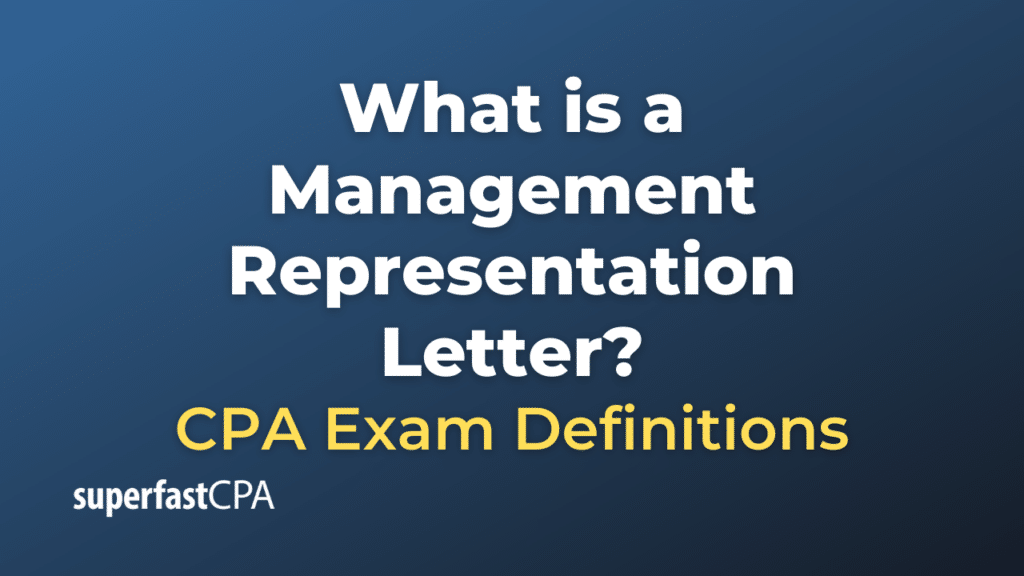
Share This...
Management representation letter.
A Management Representation Letter is a document written by the management of a company and provided to its auditors. This letter is part of the audit process and it’s typically required at the end of an audit engagement.
The purpose of a Management Representation Letter is to confirm the accuracy and completeness of the information that management has provided to the auditors. It’s a formal acknowledgement that the financial statements and other related information are true, complete, and correctly presented to the best of the management’s knowledge.
The letter covers various items including:
- Assertions : Management confirms that all financial records , data, and other relevant information have been made available to the auditor and are complete and accurate.
- Fraud and Irregularities : Management confirms that they have disclosed any known frauds or suspected frauds affecting the company, as well as any allegations of fraud or suspected fraud.
- Laws and Regulations : Management asserts that the company has complied with all laws and regulations that could have a significant effect on the financial statements .
- Subsequent Events : Management provides information on any events after the balance sheet date that may need to be disclosed in the financial statements or notes.
- Unrecorded Liabilities : Management asserts that there are no material liabilities, contingent or otherwise, that are not disclosed in the financial statements .
The Management Representation Letter helps the auditor obtain written confirmation of representations from management, which can be crucial when forming an audit opinion . It’s worth noting that while this letter is important, it does not relieve the auditor of the responsibility to gather sufficient appropriate audit evidence to form an audit opinion.
Example of a Management Representation Letter
Here is an illustrative example of what a Management Representation Letter might look like. Please note that actual letters would be more detailed and would vary depending on the specifics of the company and the audit.
[Company Letterhead]
[Auditor’s Name and Address]
Dear [Auditor’s Name],
In connection with your audit of the financial statements of [Company’s Name] as of [Financial Year End Date], and for the year then ended, we confirm, to the best of our knowledge and belief, the following representations:
- We have made available to you all financial records and related data, as well as all minutes of meetings of shareholders and the board of directors and its committees.
- We believe that the effects of uncorrected financial statement misstatements aggregated by you during the audit are immaterial, both individually and in the aggregate, to the financial statements as a whole.
- There have been no irregularities involving management or employees who have significant roles in internal control or that could have a material effect on the financial statements .
- We have complied with all aspects of contractual agreements that could have a material effect on the financial statements in the event of noncompliance.
- There have been no events subsequent to the balance sheet date that would require adjustment to, or disclosure in, the financial statements .
We acknowledge our responsibility to design, implement, and maintain internal control to prevent and detect fraud .
Yours sincerely,
[Chief Executive Officer]
[Chief Financial Officer]
Again, this is just a basic example. A real Management Representation Letter would be tailored to the specific situation and would cover all areas that are relevant to the audit.
Other Posts You'll Like...

REG CPA Practice Questions Explained: Understanding Losses from Hobbies and the Sale of Personal-Use Assets

REG CPA Practice Questions Explained: How to Calculate the QBI Deduction
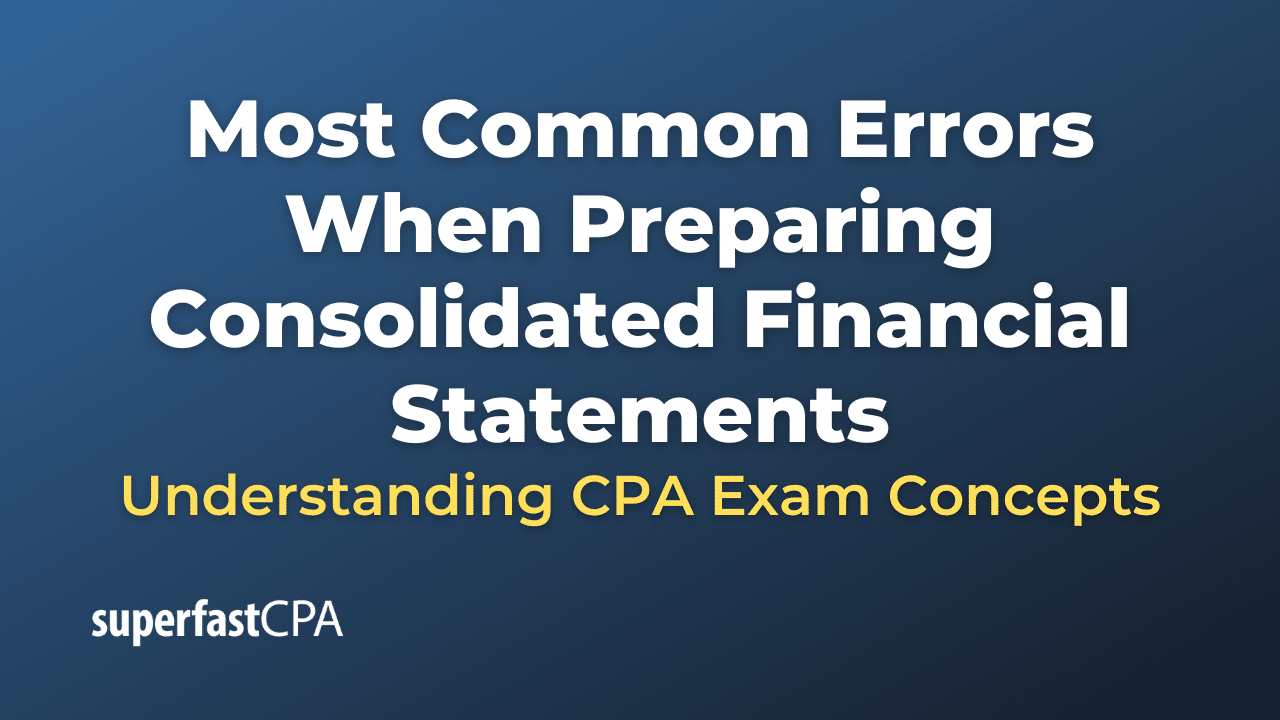
Most Common Errors When Preparing Consolidated Financial Statements

How are Joint Ventures Treated in Consolidated Financial Statements?
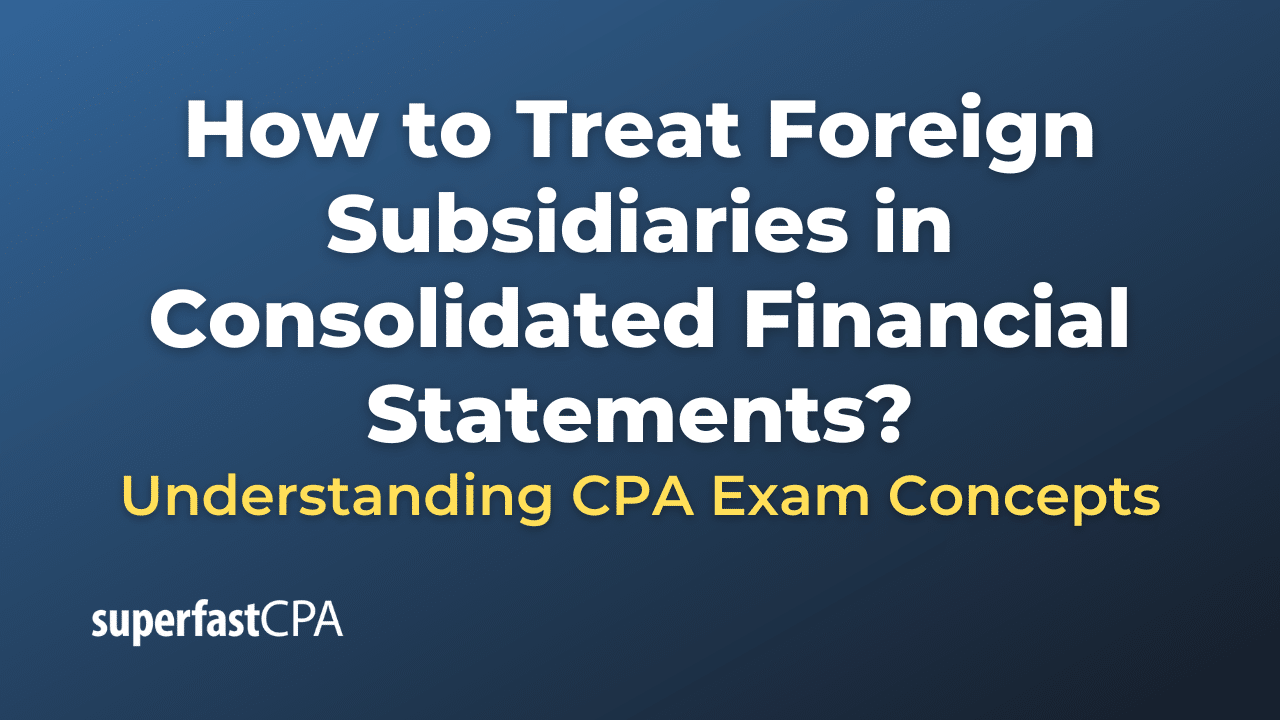
How to Treat Foreign Subsidiaries in Consolidated Financial Statements?

How Is Goodwill Treated in a Business Combination?
Helpful links.
- Learn to Study "Strategically"
- How to Pass a Failed CPA Exam
- Samples of SFCPA Study Tools
- SuperfastCPA Podcast

Helicopter Pilot to CPA: How Chase Passed His CPA Exams

How Josh Passed His CPA Exams Using Shorter Study Sessions

The Changes That Helped Marc Pass His CPA Exams After Failing 6 Times

The CPA Study Tweaks Gabi Used to Pass Her CPA Exams

How Skylar Went From a Psychology Major to Becoming a CPA

How Dalton Is Passing Exams by Making His CPA Study a Lifestyle
Want to pass as fast as possible, ( and avoid failing sections ), watch one of our free "study hacks" trainings for a free walkthrough of the superfastcpa study methods that have helped so many candidates pass their sections faster and avoid failing scores....

Make Your Study Process Easier and more effective with SuperfastCPA
Take Your CPA Exams with Confidence
- Free "Study Hacks" Training
- SuperfastCPA PRO Course
- SuperfastCPA Review Notes
- SuperfastCPA Audio Notes
- SuperfastCPA Quizzes
Get Started
- Free "Study Hacks Training"
- Read Reviews of SuperfastCPA
- Busy Candidate's Guide to Passing
- Subscribe to the Podcast
- Purchase Now
- Nate's Story
- Interviews with SFCPA Customers
- Our Study Methods
- SuperfastCPA Reviews
- CPA Score Release Dates
- The "Best" CPA Review Course
- Do You Really Need the CPA License?
- 7 Habits of Successful Candidates
- "Deep Work" & CPA Study

What is a Representation Letter?
A representation letter is a written statement provided by a company’s management to its auditors as part of the audit process. The representation letter confirms that the information provided to the auditors is complete, accurate, and fairly presented in accordance with the applicable financial reporting framework. The letter also confirms that the management has disclosed to the auditors all relevant information that may be necessary for the auditors to properly understand the company’s financial position, results of operations, and cash flows. The representation letter helps to ensure that the auditors have all the necessary information to conduct an audit in accordance with professional standards.
Why is a Representation Letter Required?
The purpose of the representation letter is to provide the auditor with assurance that the financial statements accurately reflect the company’s financial position and performance. The letter also helps the auditor to identify any potential areas of concern or risk that may need to be addressed during the audit process.
Contents of a Representation Letter
A representation letter typically includes the following:
- A statement that the financial statements being audited are complete and accurate
- A statement that the financial statements are in accordance with generally accepted accounting principles (GAAP) or international financial reporting standards (IFRS)
- A statement that the company’s management team is responsible for the preparation and fair presentation of the financial statements
- A statement that the company’s management team has made all necessary disclosures in the financial statements
- A statement that the company’s management team has disclosed all material transactions and events that have occurred during the period being audited
- A statement that the company’s management team has disclosed all material off-balance sheet transactions, arrangements, and obligations
- A statement that the company’s management team has disclosed all material changes in accounting principles that have occurred during the period being audited
- A statement that the company’s management team has disclosed all material related-party transactions that have occurred during the period being audited
- A statement that the company’s management team has disclosed all material contingencies and commitments that have occurred during the period being audited
The representation letter may also include other representations, such as a representation that the company has complied with all relevant laws and regulations, and that there are no pending legal proceedings that could have a material impact on the financial statements.
Importance of the Representation Letter
The representation letter is an important part of the audit process, as it provides the auditor with assurance that the financial statements are accurate and complete. This helps the auditor to form an opinion on the financial statements and to issue an audit report stating whether the financial statements are presented fairly, in all material respects.
Without a representation letter, the auditor may not be able to complete the audit, as they may not have sufficient evidence to form an opinion on the financial statements. This could lead to delays or other issues in the audit process, and may impact the company’s ability to obtain financing or meet other regulatory requirements.
In summary, a representation letter is a written statement signed by the company’s management that confirms the accuracy and completeness of the financial statements. It is an important part of the audit process, as it helps the auditor to form an opinion on the financial statements and to issue an audit report.
Amy is a Certified Public Accountant (CPA), having worked in the accounting industry for 14 years. She is a seasoned finance executive having held various positions both in public accounting and most recently as the Chief Financial Officer of a large manufacturing company based out of Michigan.

Related Posts
Journal entries for deferred tax assets and liabilities, what is an income tax provision, journal entries for withholding tax, capitalization of shareholder loans to equity, capitalization of retained earnings to paid-up capital, journal entries for dividends (declaration and payment).
Type above and press Enter to search. Press Esc to cancel.

03 Apr What are Management Representation Letters?

In the world of assurance engagements, a management representation letter is a formal document that represents management’s agreement with the financial statements that are being audited or reviewed. This letter is a critical part of the assurance engagement process and is required by the auditor or reviewer as evidence that management acknowledges and accepts responsibility for the financial statements.
A management representation letter is typically issued by senior management, such as the CEO or CFO, and is addressed to the CPA firm performing the audit or review. It contains a series of statements that confirm certain facts and assurances about the company’s financial information, including the completeness and accuracy of financial records, disclosures of relevant information, and adherence to accounting principles.
The letter serves several purposes, including:
- Confirming the accuracy of financial information : The management representation letter is used to confirm that the financial statements are accurate and complete. This helps provide assurance to stakeholders that the financial statements are reliable.
- Demonstrating management’s responsibility : By signing the letter, management acknowledges its responsibility for the accuracy and completeness of the financial statements. This helps to provide accountability and transparency to stakeholders.
- Providing evidence for auditors and reviewer s: The management representation letter provides evidence to the CPA firm that management has taken responsibility for the financial statements, which helps to support the audit opinion or review conclusion.
- Reducing the risk of misstatements : The letter helps to reduce the risk of misstatements by requiring management to review the financial statements and provide assurance that they are accurate and complete.
Overall, the management representation letter is a critical part of the assurance engagement process, as it helps to provide assurance that the financial statements are accurate and complete, and that management takes responsibility for them. Without this letter, CPA firms would not have the necessary evidence to support their opinions and conclusions, which could lead to a lack of confidence in the financial statements and potential legal and financial consequences for the company. In fact, CPA firms are not permitted to complete their engagement and issue an audit or review engagement report until management provides a signed management representation letter.
If you require an audit or review and would like to speak to someone about these processes, please contact us to set up a free consultation.

Jennifer Scott
Cpa, cga – senior manager.
Jennifer Scott, a Senior Manager at Clearline brings a wealth of expertise in Private Enterprise and Assurance, holding designations as a CPA and CGA. Jennifer’s focus at Clearline includes conducting reviews, compilations, and providing tax services tailored to owner-manager businesses and partnerships, with a keen interest in industries such as professionals, manufacturing, real estate, and services. Her commitment to exceptional client service is evident through her proactive approach to staying updated on evolving accounting standards and tax legislation, thereby making her clients’ lives easier Jennifer’s educational background includes a Bachelor of Commerce from UBC with a major in Accounting, followed by over 15 years of experience in public practice, specializing in private enterprise. She appreciates the supportive environment at Clearline and enjoys various activities outside of work, including travelling, cheering on her children in sports like soccer, baseball, and volleyball, indulging in long walks with her dog while listening to podcasts, spending quality time with loved ones, and exploring her passion for baking through experimenting with new recipes.

Charmaine Pirrie
Cpa, ca(sa) – senior manager.
Charmaine Pirrie, a Senior Manager at Clearline is a CPA and CA (SA) with a background in audit and review engagements. With experience from Grant Thornton and D&Co, she brings expertise in private company audits and values Clearline’s supportive environment and technical resources. Charmaine also finds fulfillment in delving into her clients’ businesses to provide tailored services, ensuring meticulous audit and review procedures. Outside of work, she enjoys spending time with family, going for walks, and swimming.

Deepeka Dhillon
Cpa – manager.
Deepeka Dhillon, a Manager at Clearline, holds a CPA designation with a focus in Private Enterprise and Tax. Her primary responsibilities include compliance, corporate restructuring, and, estate and succession planning. Deepeka’s passion lies in continuous learning, enabling her to provide tailored solutions to clients’ unique needs. With a CPA designation and completion of the CPA in-depth tax program, she brings a strong educational background to her role at Clearline. Deepeka values the countless opportunities at Clearline to expand her knowledge in the complex world of tax. Outside work, she enjoys spending time with her beloved Jack Russell Terrier, Opie.

Raj Momrath
Cpa, ca, senior tax manager.
Raj Momrath, a Senior Tax Manager at Clearline, is a CPA, CA specializing in Canadian Tax. With a focus on Canadian tax planning, corporate reorganizations, estate planning, and providing business advice, Raj caters to a diverse clientele, including small owner-manager companies, high-net-worth individuals and large privately held multinational firms. His passion lies in helping Canadian owner-manager businesses and their shareholders minimize their overall tax obligations while navigating disputes with the Canada Revenue Agency and ensuring compliance with the complex Canadian tax system. Raj’s professional journey includes prior experience in PwC’s tax group, where he obtained his Chartered Accountant designation and then some time at some mid-sized firms. Raj completed the CPA Canada InDepth Tax course in 2017 strengthening his knowledge of Canadian tax. At Clearline, Raj appreciates working alongside knowledgeable colleagues and enjoys spending quality time with his wife and two sons and attending and volunteering with their sports activities. In his leisure time, Raj indulges in barbequing, golfing, and spending time outdoors, finding relaxation and enjoyment in these pursuits.

Julia Wallis
Julia Wallis, a Senior Manager at Clearline, holds designations as a CPA, CGA, and also holds a BA. Working within the Private Enterprise Group, her primary focus revolves around assisting entrepreneurs in understanding their personal and business finances while ensuring compliance with tax reporting requirements. Julia finds fulfillment in learning about her clients’ businesses and providing financial insights to enhance their management effectiveness while optimizing tax strategies. With a diverse career spanning various companies and public practice roles, including as a controller, Julia’s progression has equipped her with invaluable skills and insights into different business operations. She chose Clearline for its respected partners and staff, aligned philosophy on client service, and flexibility to balance demanding tax filing periods with leisure time for travel and personal interests such as gardening, wine exploration, reading, and relaxation.

Annelie Vistica
Cpa, ca – principal.
Annelie Vistica, a Principal at Clearline, is a CPA and CA with a strong background in private enterprise and assurance. With a Bachelor of Accountancy from the University of Stellenbosch in South Africa and extensive experience in tax, Annelie brings expertise in business setup, growth planning, and estate transitioning. She is passionate about engaging with clients to support them through various business stages, from inception to succession planning. Annelie values the supportive environment at Clearline, where she appreciates colleagues’ assistance in tax and assurance. Outside work, she enjoys spending time with her family and dog, exploring nature, visiting family in the Okanagan, and travelling the world.

Bilal Kathrada
Cpa, ca, principal.
Bilal, a Principal at Clearline Chartered Professional Accountants, primarily focuses on income tax and succession planning for Canadian owner-managed businesses in various industries. Bilal received his Bachelor of Commerce degree from the University of Victoria and obtained his CA designation in 2005.
Prior to Clearline, he worked in the tax group of a large international accounting firm in Vancouver and a mid-sized accounting firm located in the Fraser Valley.
Outside of the office, he enjoys spending time with his wife and three children. He enjoys outdoor activities such as golf and spending time with his family and friends.

Danny Sandhu
Cpa, manager.
Bio coming soon.

Shehzel Saif
Cpa, tax manager.
As Clearline’s Tax Manager, Shehzel focuses on tax planning, corporate reorganizations and succession and estate planning. She’s passionate about continuous learning and staying up to date on tax legislation changes and helping clients with succession. In addition to her CPA designation, Shehzel also has a Bachelor of Business Administration and has completed the CPA In-Depth Taxation Program. Outside of work, she enjoys spending time with family and friends, traveling and trying out new recipes.

Ameeta Randhawa
As Clearline’s HR Manager, Ameeta supports our firm’s greatest resource—our staff. With a Bachelor of Business Administration in Human Resources and over 7 years of HR experience in various industries, she ensures all employees have a positive experience at Clearline. Ameeta’s focuses include recruitment, performance management, employee relations, program and policy development, and employee engagement. Outside of work, she enjoys traveling and spending time with friends and family.

CPA, CA, Senior Manager
Michael is a Senior Manager in Private Enterprise, carrying out reviews, compilations, and tax services for small- to medium-sized businesses. With a Bachelor of Commerce specializing in finance and a Diploma in Accounting, backed by over a decade of accounting experience, Michael is a trusted advisor who helps clients’ businesses succeed. Outside of the office, Michael enjoys spending time with family, trying out different restaurants in the city, and building and collecting mechanical keyboards.

CPA, CGA, Manager

Victor K. Yoshida
Victor was born and raised in Vancouver and obtained his Bachelor of Commerce from the University of British Columbia. He articled with Deloitte & Touche and received his CA designation in 1984. Victor was accepted to the firm’s tax group and went on to complete the Canadian Institute of Chartered Accountants In-Depth Tax course.
Victor specializes in Canadian income tax issues for professional and owner-managed businesses. He has extensive experience with business succession, estate planning, wealth preservation issues, corporate reorganizations, as well as mergers and acquisitions.
Victor was a member of the education committee of the Institute of Chartered Accountants of British Columbia and has held executive positions with various amateur sport organizations.
In his free time, Victor enjoys training for marathons, travelling, and spending time with his family.
Clarity, strategy and confidence straight to your inbox.
Sign up for Clearline news and insights

What is a Representation Letter?
An auditor’s responsibility is to gather audit evidence regarding a subject matter. This evidence comes from several audit procedures. Based on this evidence, the auditor must conclude whether the subject matter meets specific criteria. In the case of external audits , it includes examining a client’s financial statements to establish whether they are free from material misstatements.
In some cases, however, auditors may not have the option to apply some substantive audit procedures . However, that does not imply the auditor must not consider those areas. It also does not infer that auditors must provide a negative opinion regarding those areas. In these cases, auditors can also obtain a representation letter from the client’s management.
A representation letter is a form of written representation obtain from a client. Written representations are audit evidence that auditors collect. Similarly, they are necessary information that auditors may require related to a specific audit assignment. These are similar to audit inquiries but in a written form. The international auditing standard that deals with written representations are ISA 580 Written Representations.
It is a written statement written by auditors. This statement attests to the accuracy of the financial statements given to the auditors for analysis. Auditors present this letter to the client’s management, who signs the letter constructing a form of audit evidence. While this evidence is necessary, it may not represent sufficient appropriate audit evidence.
Once presented to the management, a senior official will sign the representation letter. Usually, a client’s CEO, CFO, or other higher senior accounting personnel sign the letter. This process must take place before auditors present an audit report regarding the client’s financial statements. The content of the representation letter may vary from one firm to another. However, there are some similar elements or contents that are present in every representation letter.
What are the Contents of the Representation Letter?
A typical representation letter will include various areas to cover the auditors’ liability towards the audit assignment. It will also include areas to ensure the management is aware of its responsibility to prepare accurate financial statements. According to accountingtool.com , representation letters will cover the following areas.
1. The management is responsible for the proper presentation and accurate preparation of the financial statements. It will also include a reference to the applicable accounting framework for this purpose. 2. The auditors have received all the financial records related to the audit. 3. The board of directors meeting minutes are complete. 4. There are no unrecorded transactions. 5. The management has disclosed all related party transactions. 6. The management has provided all letters from regulatory agencies regarding financial reporting noncompliance if required. 7. The net effect of all uncorrected misstatements is immaterial. 8. The financial statements conform to the applicable accounting standards. 9. The management doesn’t have any knowledge of fraud within the company. 10. The financial statements account for all material transactions. 11. The management is responsible for systems designed to detect and prevent fraud. 12. The client has disclosed all liens and other encumbrances on its assets. 13. The management has disclosed all contingent liabilities. 14. The management acknowledges its responsibility for the system of financial controls. 15. The client has disclosed all unasserted claims or assessments.
Overall, the representation letter will consist of all the management’s responsibilities for the financial statements and the audit. This letter will decrease the auditors’ responsibility if there is a future dispute. Similarly, it places responsibility on the management for areas where it must ensure proper accounting and controls. Auditors will not allow the management to make changes to the representation letter before signing.
What Happens If Auditors Cannot Obtain Reliable Representation Letters?
In some cases, auditors cannot obtain a reliable representation letter from the management. These may occur when the auditor has concerns about the competence, integrity, or diligence of the management. In these cases, the standards require auditors to determine the effect that such issues may have on the reliability of the representation letters.
When auditors obtain representation letters that are inconsistent with other audit evidence, they must perform procedures to resolve any discrepancies. If they cannot do so, they will need to reconsider the prior assessment of the client’s management. The auditors must also determine the effects such circumstances will have on the reliability of the representation letter or the audit assignment.
If auditors conclude that the representation letter is not reliable, they must take appropriate actions. These may include establishing the possible effect on the opinion in the auditor’s report. The same cases will apply when the management refuses to provide a representation letter. The auditor must discuss it with the management before taking any actions.
Representation letters are a form of written representation and constitute an essential part of audits. These letters attest to the accuracy of the financial statements presented by the client’s management. There are several areas which representation letters cover. If auditors cannot obtain reliable representation letters, they will need to evaluate the situation and take appropriate actions.
Related Posts:
- Reasonable Assurance Engagement: All You Need to Know!
- Limited Assurance Engagement: All You Need to Know!
- Types of Assurance Engagement: All You Need to Know
- Objectives of an Assurance Engagement


14+ Management Representation Letter Format, What is It, Examples
- Letter Format
- January 24, 2024
- Business Letters , Contract Letters , Legal Letters
Management Representation Letter Format : A management representation letter format is a formal document used by auditors to obtain written confirmation from management about certain financial and non-financial matters . The Business letter is an important part of the audit process as it helps auditors gain a better understanding of the client’s business operations, accounting policies, and financial reporting practices .
- Business Inauguration Invitation Letter
- Business Proposal Acceptance Letter Format
- Business Invitation Letter Format
- Business Agreement Letter Format
- Business Contract Letter Format
Management Representation Letter Format
Content in this article
The management representation letter format is typically including the following components:
- Opening Paragraph: The Legal letter begins with a formal greeting and an explanation of the purpose of the letter. It may also include the date of the audit and the reporting period.
- Responsibilities of Management: This section outlines the responsibilities of management in relation to the financial statements and the audit process. It confirms that management is responsible for the preparation and presentation of the financial statements in accordance with accounting principles, maintaining adequate internal controls, and providing the auditor with access to all relevant information.
- Representations: This is the main body of the letter, where management makes specific representations about various financial and non-financial matters. These may include statements about the completeness and accuracy of financial statements, compliance with laws and regulations, the absence of fraud, and the adequacy of internal controls.
- Closing Paragraph: The Contract letter concludes with a statement confirming that management has disclosed all relevant information to the auditor and that the representations made in the letter are true and accurate.
It is important to note that the management representation letter Format is a legal document and should be drafted with care. Management should review the letter carefully before signing it, as they are legally responsible for the accuracy of the information provided.
In addition to providing auditors with important information about the client’s business, the management representation letter can also serve as a valuable communication tool between management and the auditor . It can help to identify potential issues early in the audit process and facilitate a smoother and more efficient audit.
Management Representation Letter Format – Sample Format
Below is a Sample Format of Management Representation Letter Format:
[Your Company Letterhead]
[External Auditor’s Name]
[External Auditor’s Firm]
[Address Line 1]
[Address Line 2]
[City, State, ZIP Code]
Dear [External Auditor’s Name],
Re: Management Representation Letter
We appreciate the opportunity to work with your firm in connection with the audit of the financial statements of [Your Company Name] for the fiscal year ended [Date]. In connection with your audit, we are providing you with this representation letter.
We, the management of [Your Company Name], confirm the following representations:
- The financial statements have been prepared in conformity with the generally accepted accounting principles (GAAP) and present fairly the financial position, results of operations, and cash flows of the company.
- Management is responsible for establishing and maintaining effective internal control over financial reporting, and there have been no significant changes in the internal control over financial reporting that could have a material effect on the company’s ability to record, process, summarize, and report financial data.
- To the best of our knowledge, there has been no fraud or illegal acts that have materially affected or are reasonably likely to materially affect the financial statements.
- Except as disclosed in the financial statements or in the notes thereto, there are no pending or threatened legal actions, claims, or assessments that could have a material effect on the financial statements.
- All significant information and documentation related to the company’s operations and financial transactions have been made available to your firm.
- We have disclosed all significant events occurring after the balance sheet date that would require adjustment to, or disclosure in, the financial statements.
This representation letter is provided to you in connection with your audit of the financial statements of [Your Company Name] and should be read in conjunction with the auditor’s report. We acknowledge our responsibility for the design and implementation of internal controls to prevent and detect fraud, as well as the preparation of financial statements.
Please let us know if you need any further information or clarification. We appreciate your professional services and look forward to a successful audit.
[Your Name]
[Your Title]
[Your Company Name]
[Your Contact Information]
This is a general template for a management representation letter. Specific content may vary based on the company’s circumstances and the requirements of the external auditor. It is advisable to consult with legal and accounting professionals when preparing such letters.
Email Ideas about Management Representation Letter Format
Here’s an Email Ideas for Management Representation Letter Format:
Subject: Request for Management Representation Letter
Dear [Manager’s Name],
I am writing to request your assistance in providing a management representation letter format to complete our audit process. As you are aware, the management representation letter is a crucial document that provides written confirmation from management on the accuracy and completeness of financial statements and related disclosures.
The representation letter helps our auditors to obtain evidence in support of the financial statements and to obtain assurance that management has fulfilled its responsibilities. It also serves as a tool for our auditors to document the representations made by management during the course of the audit.
We would appreciate it if you could provide the management representation letter as soon as possible, but no later than [date]. We understand that the process of preparing this letter can take some time and we are available to discuss any questions or concerns you may have.
Please let us know if you need any further information or assistance in preparing the letter. We appreciate your cooperation and look forward to completing the audit process.
Thank you for your attention to this matter.
Management Representation Letter Format to Auditor
This letter, presented to auditors, formalizes the company’s commitments, affirming the accuracy of financial data, adherence to accounting standards, and cooperation with auditors to ensure a transparent and accurate audit process.
We appreciate the opportunity to collaborate with your firm for the audit of the financial statements of [Your Company Name] for the fiscal year ended [Date]. In connection with the audit, we are pleased to provide you with the following representations:
- The management of [Your Company Name] is responsible for the preparation and fair presentation of the financial statements in conformity with the generally accepted accounting principles (GAAP).
Should you require any further information or clarification, please do not hesitate to contact us. We appreciate your professional services and look forward to a successful audit.
This letter is a general format for a management representation letter to an auditor. Specific content may vary based on the company’s circumstances and the requirements of the external auditor. Always consult with legal and accounting professionals when preparing such letters.
Management Representation Letter Format to Bank
This Management Representation Letter Format serves to affirm the accuracy of financial information, adherence to credit terms, and compliance with agreements, fostering transparency in the company’s dealings with the bank.
[Bank Name]
[Bank Address Line 1]
[Bank Address Line 2]
Dear [Bank Manager’s Name],
Re: Management Representation Letter for Banking Purposes
We hereby provide this Management Representation Letter in connection with our banking relationship with [Bank Name]. This letter is to confirm certain representations to assist the bank in its assessment of our financial standing and creditworthiness.
- We confirm that the financial statements provided to the bank are prepared in accordance with generally accepted accounting principles (GAAP) and present fairly our financial position as of [Date].
- All information provided regarding our credit facilities, loans, and guarantees is accurate, complete, and reflective of our current financial obligations to the best of our knowledge.
- We confirm that we are in compliance with all terms and conditions outlined in our loan agreements, credit facilities, and any other financial arrangements with the bank.
- We have disclosed any material changes in our financial condition, business operations, or other relevant matters that may impact our ability to meet our financial obligations to the bank.
- There are no pending or threatened legal proceedings, disputes, or litigation that could materially affect our ability to fulfill our financial commitments to the bank.
- The undersigned individuals have the authority to provide these representations on behalf of the company, and all necessary corporate approvals have been obtained.
This Management Representation Letter is provided solely for the purpose of supporting our banking relationship with [Bank Name]. We acknowledge our responsibility to promptly inform the bank of any material changes that may affect the accuracy of these representations.
If you require any additional information or documentation, please do not hesitate to contact us. We appreciate your continued support and understanding.
This Management Representation Letter to the bank is a formal document confirming key financial and operational details. Customize it as needed based on your specific banking relationship and requirements.
Management Representation Letter Format – Template
Here’s a Template of Management Representation Letter Format:
[Company Letterhead]
[External Auditor Name] [External Auditor Address] [External Auditor City, State ZIP Code]
Dear [External Auditor Name],
We are pleased to provide you with this management representation letter in connection with the audit of our financial statements for the year ended [Date]. As management of [Company Name], we acknowledge our responsibility for the preparation and presentation of the financial statements in accordance with generally accepted accounting principles.
We confirm that we have provided you with all relevant information necessary for the audit and that we have disclosed all known or suspected fraud, illegal acts, or non-compliance with laws and regulations that may have a material effect on the financial statements.
We represent that the financial statements are complete and accurate, and that they fairly present, in all material respects, the financial position of [Company Name] as of [Date], and the results of its operations and cash flows for the year then ended.
We also confirm that the representations made in this letter are true and accurate as of the date of this letter.
[Your Name] [Your Title] [Your Company Name]
Management Representation Letter for External Audit
This letter reinforces the company’s commitment to transparency, providing essential assurances to external auditors regarding the accuracy of financial information and cooperation throughout the audit, crucial for ensuring the integrity of the audit process.
[Audit Firm Name]
[Audit Firm Address]
Re: Management Representation for the External Audit of [Company Name]
We, the undersigned management of [Your Company Name], hereby provide this letter to confirm certain representations in connection with the external audit of our financial statements for the fiscal year ending [Date].
- We confirm that the financial statements, including the balance sheet, income statement, and cash flow statement, present a true and fair view of the financial position of [Your Company Name] as of [Date].
- The financial statements have been prepared in accordance with generally accepted accounting principles (GAAP) [or International Financial Reporting Standards (IFRS)].
- We have established and maintained effective internal controls to provide reasonable assurance regarding the reliability of financial reporting and the preparation of financial statements in accordance with applicable accounting standards.
- All significant information and disclosures related to our operations, financial position, and business transactions that may affect the understanding and interpretation of the financial statements have been disclosed to the best of our knowledge.
- All assets and liabilities, including contingent liabilities, have been properly recorded and disclosed in the financial statements.
- We have disclosed to you all known and potential legal claims, disputes, and litigations that may have a material impact on the financial statements.
- We acknowledge our responsibility to provide you and your team with complete access to all information and documents requested during the audit process.
- We confirm that there have been no changes in accounting policies or practices that materially affect the financial statements without appropriate disclosure.
This letter is provided solely for the purpose of supporting the external audit of our financial statements. We understand the importance of your audit in providing assurance to our stakeholders, and we commit to providing all necessary cooperation throughout the audit process.
If you require any additional information or clarification, please do not hesitate to contact us.
This Management Representation Letter for an external audit assures the auditor of the accuracy and completeness of financial statements, compliance with accounting standards, and cooperation during the audit process. Customize it as per your specific company and audit requirements.
Management Representation Letter to Investors
This letter serves as a transparent communication tool, instilling confidence among investors by affirming the company’s commitment to sound financial practices, compliance, and overall business stability.
[Investor’s Name]
[Investor’s Company/Organization]
[Investor’s Address]
Dear [Investor’s Name],
Re: Management Representation Letter to Investors
We, the undersigned management of [Your Company Name], are pleased to provide this letter to investors to affirm certain key aspects of our operations and financial position. This representation is made as of [Date] in connection with your investment in our company.
- We confirm that the financial statements provided to investors accurately represent the financial position of [Your Company Name] as of [Date]. The statements have been prepared in accordance with generally accepted accounting principles (GAAP) [or International Financial Reporting Standards (IFRS)].
- The management assures investors that the operational performance of the company is in line with the disclosed business plans and strategies. Any material changes have been duly communicated.
- We confirm that the company is in compliance with all applicable laws and regulations relevant to its operations. Any deviations have been appropriately addressed or disclosed.
- All material contracts and agreements that may impact the company’s financial position have been accurately disclosed to investors. There have been no material breaches of these contracts.
- The management has disclosed all known risk factors that may materially affect the company’s financial position or future prospects. We are committed to proactive risk management.
- Funds invested by our esteemed investors have been utilized in accordance with the stated purposes and business plans as communicated during the investment process.
- Any forward-looking statements made by the management are based on reasonable assumptions. However, actual results may vary, and the company is not obligated to update these statements.
- The management is dedicated to maintaining open lines of communication with investors. Any significant developments or changes in the company’s status will be promptly communicated.
This letter is intended to provide additional assurance and transparency to our valued investors. We appreciate your trust in [Your Company Name] and remain committed to creating value and fostering a mutually beneficial partnership.
If you have any questions or require further clarification, please do not hesitate to contact us.
This Management Representation Letter to Investors affirms key aspects of the company’s financial position, operational performance, and commitment to transparency, providing reassurance to investors about their investment in the company. Customize it as per your specific company and investor relations.
Management Representation Letter to Regulators
This letter serves as a formal commitment from the company’s management to regulatory bodies, ensuring transparency, accountability, and adherence to regulatory requirements, thereby fostering trust and regulatory compliance.
[Regulatory Authority Name]
Subject: Management Representation Letter
Dear [Regulatory Authority Name],
Re: Management Representation for Compliance with [Applicable Laws/Regulations]
We, the undersigned management of [Your Company Name], hereby provide this letter to confirm our commitment to compliance with all applicable laws, regulations, and industry standards under the jurisdiction of [Regulatory Authority Name].
- We affirm that our company operates in full compliance with all relevant laws and regulations governing our industry and business operations.
- The financial statements of [Your Company Name], including the balance sheet, income statement, and cash flow statement, have been prepared in accordance with applicable accounting standards, providing a true and fair view of the company’s financial position.
- We have established and maintained effective internal controls to ensure the accuracy and reliability of financial reporting and compliance with regulatory requirements.
- All material information, events, and transactions that may affect the company’s compliance status or financial position have been transparently disclosed.
- We commit to timely and accurate filing of all required reports, statements, and documentation as per the regulations enforced by [Regulatory Authority Name].
- We acknowledge our responsibility to fully cooperate with any regulatory inspections or inquiries that may arise, providing all necessary information and documentation as requested.
- Our management is dedicated to continuous improvement in our compliance practices, ensuring that we stay abreast of any changes in laws or regulations that may impact our business.
This letter is provided for the purpose of assuring [Regulatory Authority Name] of our dedication to compliance and transparent business practices. We understand the importance of regulatory oversight in maintaining market integrity and protecting the interests of stakeholders.
This Management Representation Letter to Regulators emphasizes the company’s commitment to compliance with applicable laws and regulations, providing assurance to regulatory authorities and fostering transparency in business operations. Customize it based on your specific company and regulatory requirements.
Management Representation Letter Format – Example
Here’s an Example of Management Representation Letter Format:
As management of [Company Name], we acknowledge our responsibility for the preparation and presentation of the financial statements in accordance with generally accepted accounting principles. We understand that you will be conducting an audit of our financial statements for the year ended [Date].
We confirm that we have disclosed all known or suspected fraud, illegal acts, or non-compliance with laws and regulations that may have a material effect on the financial statements. We also confirm that we have provided you with access to all relevant information necessary for the audit.
We understand that this letter is a legal document and that we are responsible for the accuracy of the information provided. We confirm that the representations made in this letter are true and accurate as of the date of this letter.
Management Representation Letter Format – Example
Formal Management Representation Letter Format
This Management Representation Letter Format serves to provide external auditors with essential assurances from management regarding the accuracy and completeness of financial information, adherence to legal and regulatory requirements, and the effectiveness of internal controls.
Re: Management Representation for [Year/Period] Ended [End Date]
We, the undersigned management of [Your Company Name], are providing this letter to confirm certain representations made to you during the audit of our financial statements for the [Year/Period] ended [End Date].
- We acknowledge our responsibility for the preparation and fair presentation of the financial statements in accordance with the applicable financial reporting framework.
- To the best of our knowledge and belief, the company has complied with all relevant laws and regulations that may materially affect the financial statements.
- We have established and maintained effective internal control over financial reporting, and any identified deficiencies have been disclosed to you.
- We have made you aware of any known or suspected instances of fraud or illegal acts affecting the company.
- All related party transactions have been accurately identified, disclosed, and recorded in accordance with the applicable financial reporting framework.
- We have disclosed to you all known actual or potential litigation and claims that may have a material effect on the financial statements.
- We have assessed the company’s ability to continue as a going concern and disclosed any uncertainties related to going concern appropriately.
- The information provided to you during the audit is complete and accurate, and we have disclosed all significant matters relevant to the financial statements.
This representation is provided to assist you in obtaining reasonable assurance that the financial statements are free from material misstatement. If there are any additional matters or information you require, please contact us promptly.
We appreciate your professional services and look forward to a successful completion of the audit.
This Formal Management Representation Letter Format is designed to provide external auditors with assurances on various aspects related to financial statements, compliance, internal controls, and more. Customize it based on your specific company and audit requirements.
Fraud and Illegal Acts Representation Letter
This letter underscores the company’s dedication to integrity and transparency, outlining measures taken to prevent and address fraudulent activities, and providing assurances to external auditors regarding compliance with legal and ethical standards.
Subject: Representation Regarding Fraud and Illegal Acts
Re: Fraud and Illegal Acts Representation
We, the undersigned management of [Your Company Name], hereby provide this representation regarding the prevention, detection, and reporting of fraud and illegal acts within the organization for the [Year/Period] ended [End Date].
- We acknowledge our responsibility for the prevention and detection of fraud and illegal acts within the organization.
- We have established and maintained internal controls and procedures designed to prevent and detect fraud and illegal acts.
- Employees are provided with adequate training and awareness programs to understand the risks associated with fraud and illegal acts and are encouraged to report any concerns through appropriate channels.
- We have communicated ethical standards and expectations to all employees, emphasizing our commitment to conducting business with integrity and in compliance with applicable laws and regulations.
- Any known or suspected instances of fraud or illegal acts are promptly reported to the appropriate levels of management and, if necessary, to the board of directors.
- In the event of identified fraud or illegal acts, we conduct thorough investigations and implement remedial actions, including disciplinary measures and corrective measures to prevent recurrence.
- We have established mechanisms to protect whistleblowers from retaliation and encourage the reporting of concerns without fear of reprisal.
- We commit to cooperating fully with external authorities, including law enforcement agencies and regulatory bodies, in the investigation of fraud or illegal acts.
- All representations made to you regarding the prevention, detection, and reporting of fraud and illegal acts are accurate and complete.
This representation is provided to assist you in obtaining reasonable assurance that the financial statements are free from material misstatement, including those resulting from fraud or illegal acts.
If you have any questions or require further clarification on any matters related to fraud and illegal acts, please do not hesitate to contact us.
This Fraud and Illegal Acts Representation Letter is designed to assure external auditors of the company’s commitment to preventing, detecting, and reporting fraud and illegal acts. Customize it based on your specific company policies and procedures.
FAQS About Management Representation Letter Format, What is It, Examples
What is a management representation letter format.
A Management Representation Letter Format is a formal document issued by a company’s management to external auditors, confirming certain representations related to financial statements, compliance, internal controls, and other crucial aspects during an audit.
What is the Purpose of a Management Representation Letter Format?
The primary purpose is to provide external auditors with written representations from management regarding various aspects of the company’s operations. Management Representation Letter Format helps auditors obtain assurance on the accuracy and completeness of financial information and other relevant matters.
What Information is Typically Included in a Management Representation Letter Format?
The Management Representation Letter Format typically includes representations related to financial statements, compliance with laws and regulations, internal controls, fraud and illegal acts, related party transactions, litigation, and the going concern assumption.
Why is a Management Representation Letter Format is Important in an Audit?
The Management Representation Letter Format is crucial as it formalizes management’s acknowledgment of its responsibilities and provides auditors with assurances on key matters. It enhances the audit process by obtaining explicit confirmations from management regarding the information and processes being audited.
Is a Management Representation Letter Standardized?
While there are common elements, the letter is often customized to suit the specific circumstances and requirements of the company and the audit. It may vary in content based on industry practices, regulatory requirements, and the auditor’s specific requests.
Are There Risks Associated with Providing Management Representation Letter Format?
Yes, Management Representation Letter Format, there are risks, and management should carefully consider the accuracy of the representations made. Providing false or misleading information in the representation letter can have legal and financial consequences.
The Management Representation Letter Format is a formal document that serves as an important part of the audit process . It outlines the responsibilities of management and makes specific representations about various financial and non-financial matters. The Management Representation Letter Format should be carefully reviewed and signed by management to ensure that the information provided is accurate and complete .
Related Posts
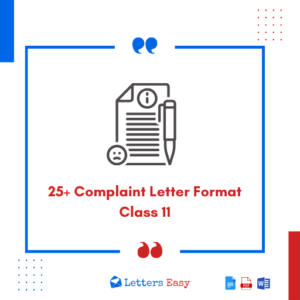
25+ Complaint Letter Format Class 11 – Email Template, Tips, Samples

15+ Business Letter Format Class 12 – Explore Writing Tips, Examples

21+ Black Money Complaint Letter Format, How to Write, Examples
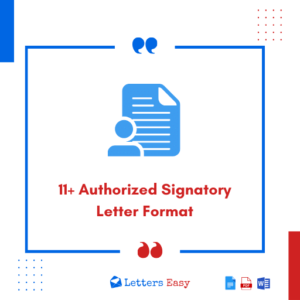
11+ Authorized Signatory Letter Format – Templates, Writing Tips

20+ Authorization Letter Format for ICEGATE Registration – Examples

28+ Assurance Letter Format – How to Start, Examples, Email Template
Leave a reply cancel reply.
Your email address will not be published. Required fields are marked *
Name *
Email *
Add Comment
Save my name, email, and website in this browser for the next time I comment.
Post Comment
CHECKPOINT LEARNING
Checkpoint Learning Message
Checkpoint Learning
Course Detail
What is a Management Representation Letter
We know that generally accepted auditing standards (GAAS) require auditors to obtain written representations from their clients' management team, as part of audits of financial statements and periods covered by the auditors' reports. The specific written representations will depend on the individual engagement circumstances and the nature and basis of the presentation of the financial statements. This overview may be appropriate for professionals at all organizational levels.
Checkpoint Learning is committed to bringing innovative solutions to you, now including nano-learning! As per NASBA Standards, a nano-learning course is a 10-minute, electronic, self-study course in which you are eligible to earn 1/5 (or 0.2) CPE credits.
At this time, nano-learning is not accepted by all state boards. If you are not sure whether your state board accepts nano-learning, you can ask your state board or visit the NASBA registry: (nasbaregistry.org).
Included with subscription(s):
- Premier Plus CPE Package
0.2 Credits
Accreditation Information
- TX Credits : 0.2
Learning objectives
Upon successful completion of this course, the user should be able to:
identify what is contained in a management representation letter.
Course outline
- Introduction
- Changes to AU-C Section 580, Written Representations
- An Example of a Management Representation Letter - Part 1
- An Example of a Management Representation Letter - Part 2
Requirements
Additional Compliance Information
- Insights & Analysis
- Nonprofit Jobs
Step 3: After the Audit
After the audit, the audit committee, executive director, and senior financial staff are responsible for reviewing the draft audit report, asking questions about the auditors' findings, and evaluating any recommendations before they are presented to the board in the final report.
What is the client representation "letter to management”? This letter, sometimes referred to simply as the "management letter" serves to identify areas of operations or procedures that the nonprofit may want to improve or redesign. Since auditors work with a variety of organizations, they often are aware of "best practices" or -- at the very least -- "better practices" that they can point out in the letter to management. The audit committee or staff often asks to review a draft of the management letter just to make sure that the letter is accurate before the final version goes to the board of directors, since the board is likely to be concerned about any deficiencies or even less serious concerns that the auditors identify in the letter. The accounting standards require the auditors to report to the board any "material weaknesses" and significant deficiencies. ( SAS Nos. 114, 115 )
Issues that auditors may point out in the client representation letter typically fall into two categories:
- Material internal control issues : Issues that auditors would identify include any weaknesses in the processes, systems, and internal procedures that help to ensure that all financial transactions are recorded properly. Strong internal controls (e.g., early detection and correction) serve to highlight errors and irregularities in financial operations. Correcting the issues will provide additional integrity to the financial statements and may help to reduce audit costs in the future. The auditors will point out any material internal control issues in the management letter so that the nonprofit can address those issues before the next audit.
- Operating inefficiencies : Management letters may identify issues that are, or could become red flags, and propose improvements to resolve problems and strengthen operations. Sometimes it takes an independent or outsider’s eye to identify inefficiencies that could be improved or new technologies that will improve operations. The auditor’s letter to management may also point out operating procedures that are inefficient or unnecessary.
What is the role of the audit committee (or the board) after the audit?
The insights shared by the auditors should be presented formally and in-person by the auditor to the board of directors or the audit committee at the conclusion of the audit process. However, first there should be a discussion with the audit committee and management. In addition to acting on suggestions provided by the auditor, management/the audit committee can also use the opportunity of an annual audit to enlist the support of the auditor to undertake new initiatives. If the auditor agrees that initiatives suggested by management may strengthen operations, the auditor may choose to include management's ideas in the management letter. Management may also identify for the auditor areas that may need further, independent corroboration in order for the board to fully appreciate the ramifications of their decisions.
Questions for the audit committee to discuss with the auditor(s) when reviewing the draft of the management letter and the audited financial statements:
- Did the auditors note any limitations on the scope or nature of the audit procedures?
- What factors did the auditors consider when determining the scope of the audit?
- Did the staff cooperate with the auditors? Was there a healthy flow of information between the staff and auditors?
- Were there any legal and regulatory matters that would impact the organization’s financial statements?
- Were there any conflicts of interest between the auditors and the organization? If so, how were they handled?
- Did the auditors find that the organization’s internal financial controls were adequate?
- Did the auditors provide a written opinion about the quality and acceptability of the nonprofit’s accounting principles?
- Were there any significant changes to the audit plan that occurred during the course of the audit?
- Were there any serious disputes or difficulties encountered by the auditors during the audit?
- The auditors will usually provide such recommendations to the committee in a “letter management.”
- The committee should review the executive director’s comments in response to the letter and receive follow-up reports on actions taken.
Questions for the audit committee to discuss with the executive director (“ED”) after the audit:
- Did the auditors perform their work efficiently and effectively? Are you (ED) satisfied with the scope, nature, and timing of the audit?
- Are you (ED) satisfied with the knowledge, skills, and abilities of those assigned to do the audit?
- Did the auditors work with the organization to ensure complete coverage and effective use of resources without redundant efforts?
- Did the committee and ED review the fee arrangement between the organization and the auditors?
- Was there any documentation that the auditors requested that the staff could not produce?
- Were there any serious disputes or difficulties encountered by the staff during the audit?
- Does the staff believe that the auditors were diligent in their review?
- Was the auditors’ presence on site during fieldwork disruptive?
- Are you satisfied that the external auditors remain independent of the organization in spite of any audit-related, or non-audit services the auditors provide to the organization?
Six questions for the audit committee/board to ask the auditors after the audit:
When the draft report and client representation letter to management is ready but before they are finalized, the audit committee/board liaison should meet with the auditors one final time before the report and letter are dated and released to the board of directors. These questions are designed to determine whether there are any issues to bring to the board's attention in connection with the audit, and to anticipate questions that a board member may typically ask when presented with the independent auditor's report.
- Was the management team cooperative and forthcoming with requested information and documentation?
- How do our accounting policies and procedures compare with those of other comparable nonprofits?
- Are there any items that might be disputed by the IRS? If yes, what documentation should be on hand to bolster the item?
- Did the management team follow suggestions noted by auditors in prior years to correct weaknesses in the internal accounting system?
- Did you discover anything regarding the financial statements or internal financial management procedures that should be brought to the attention of the board of directors?
- Do you have any suggestions for improvements in accounting, reporting, or operating procedures?
Release of the auditor's report to management
After all questions have been asked and answered, including confirmations of anything that the auditors needed to check, the final step is that the auditors will sign and date the report, and deliver it to the board of directors with a client representation letter, the same date as the audit report.
Presentation of the audit report to the board of directors
During the meeting that the board of directors receives the independent audit, the appropriate action for the agenda is for the board of directors to "accept" the auditor's report and letter to management, rather than "approve" them. This is because the board's action in connection with the audit is literally to receive and "accept" the auditor's independent report. The findings in the report are not subject to change by the board after the report is submitted to the board, consequently, the board's action is not to approve/disapprove, but to accept the report. However, discussion by the full board of the audit report should be encouraged so that board members are familiar with the report's findings. Generally all board members receive a copy of the independent audit and management letter in their board materials for the meeting during which the report is accepted.
Evaluating and engaging an auditor for the future
During and after the audit, audit committees evaluate the auditors' performance and recommend to the board whether to retain the same firm for next year’s audit or whether to engage a new one. Therefore, it is imperative that the audit committee is diligent in evaluating the auditors. The audit committee should consider a number of questions about its relationship with the independent auditor and should also engage the nonprofit’s key executives for their comments.
To demonstrate a commitment to transparency and accountability, the National Council of Nonprofits posts its annual audit report on its website in addition to posting all the other documents required to be made available to the public upon request. Read more about cultivating a culture of accountability and transparency .
Additional resources for after the audit
- Get the Most Value from Your Audit (Blue Avocado)
- Auditing the auditor: Questions to ask before and after the audit (HBK)
Nonprofit Audit Guide© Table of Contents
- Nonprofit Audit Guide© Home Page
- What is an independent audit?
- Does your nonprofit need to have an independent audit?
- State law nonprofit audit requirements
- Federal law audit requirements
- Why a nonprofit might conduct an audit even when the law doesn’t require it .
- Board's role and audit committees
- A three-step approach to managing an independent audit
- Myth: Audits uncover fraud
- Acknowledgements
Disclaimer: The resources in this Guide are offered for informational purposes only. The National Council of Nonprofits recommends consulting a lawyer or accountant who has expertise in accounting rules for charitable nonprofits so that you can be confident that your charitable nonprofit is in compliance with all legal requirements. And, when your organization is looking for trusted information about financial management practices, good governance, and accountability, don’t overlook the resources that membership in your state association of nonprofits can provide.

- Submit Post
- Union Budget 2024
- CA, CS, CMA
Format of Management Representation Letter (MRL) for Audit
In this article author has shared the format of the Management Representation Letter or Written Representation (MRL/WR) to be obtained from the management during various professional engagements:
M/s XYZ & Co.
Gurgaon, Haryana
Sub: Management Representation in course of Statutory Audit for F.Y. 2021-22 .
This representation letter is provided in connection with your audit of the financial statements of M/s Private Limited, Delhi for the year ended March 31, 20XX for the purpose of expressing an opinion as to whether the financial statements are presented fairly, in all material respects, (or give a true and fair view) in accordance with the applicable accounting standards in India.
We confirm that (to the best of our knowledge and belief, having made such inquiries as we considered necessary for the purpose of appropriately informing ourselves):
Financial Statements
- We have fulfilled our responsibilities, as set out in the terms of the audit engagement, for the preparation of the financial statements in accordance with Financial Reporting Standards; in particular the financial statements are fairly presented (or give a true and fair view) in accordance with the applicable accounting standards in India.
- Significant assumptions used by us in making accounting estimates, including those measured at fair value, are reasonable.
- Related party relationships and transactions have been appropriately accounted for and disclosed in accordance with the requirements of applicable accounting standards in India.
- All events subsequent to the date of the financial statements and for which applicable accounting standards in India require adjustment or disclosure have been adjusted or disclosed.
- The effects of uncorrected misstatements are immaterial, both individually and in the aggregate, to the financial statements as a whole.
Information Provided
- We have provided you with:
Access to all information of which we are aware that is relevant to the preparation of the financial statements such as records, documentation and other matters;
Additional information that you have requested from us for the purpose of the audit; and
Unrestricted access to persons within the entity from whom you determined it necessary to obtain audit evidence.
- All transactions have been recorded in the accounting records and are reflected in the financial statements.
- We have disclosed to you the results of our assessment of the risk that the financial statements may be materially misstated as a result of fraud.
- We have disclosed to you all information in relation to fraud or suspected fraud that we are aware of and that affects the entity and involves:
Management;
Employees who have significant roles in internal control; or
Others where the fraud could have a material effect on the financial statements.
- We have disclosed to you all information in relation to allegations of fraud, or suspected fraud, affecting the entity’s financial statements communicated by employees, former employees, analysts, regulators or others.
- We have disclosed to you all known instances of non-compliance or suspected non-compliance with laws and regulations whose effects should be considered when preparing financial statements.
- We have disclosed to you the identity of the entity’s related parties and all the related party relationships and transactions of which we are aware.
For and on Behalf Board of Directors
For any inquiry you may write us on: [email protected]
Disclaimer: The information provided by the author in the article is for general informational purposes only. All information provided is in the good faith, however we make no representation or warranty of any kind, express or implied, regarding the accuracy, adequacy, validity, reliability, availability or completeness of any information in the article.
- « Previous Article
- Next Article »

Name: CA. Ramanujan Sharma
Qualification: ca in practice, company: n k r s & co (chartered accountants), location: gurugram, haryana, india, member since: 25 apr 2022 | total posts: 16, my published posts, join taxguru’s network for latest updates on income tax, gst, company law, corporate laws and other related subjects..
- Join Our whatsApp Channel
- Join Our Telegram Group

Leave a Comment
Your email address will not be published. Required fields are marked *
Post Comment
Notice: It seems you have Javascript disabled in your Browser. In order to submit a comment to this post, please write this code along with your comment: 7019d81517c419ca997f8c01fb37f2bc

Subscribe to Our Daily Newsletter
Latest posts.

Denial of input tax credit to service provider not liable to pay tax on output service justifiable: Delhi HC
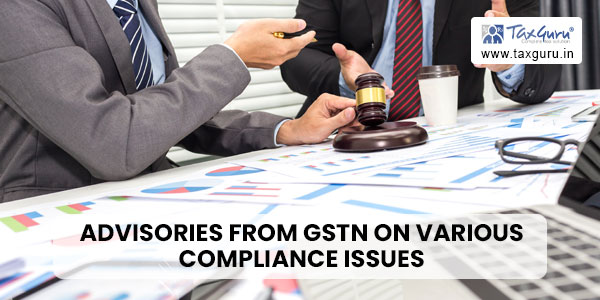
Latest GSTN Advisories: E-Invoicing, HSN Auto-Population & More

Unveiling the Connection: Electoral Bonds as a Gateway to Money Laundering in India

Setting Up of Nidhi Company and Its Complaince Thereon

Form No. 10AB under Income-tax Act,1961

Analysis of the Different Heads of Income

Private Companies’ Duty & Shareholders’ Guidelines for Dematerialization

Voluntary liquidation under Companies Act, 2013 & IBC, 2016
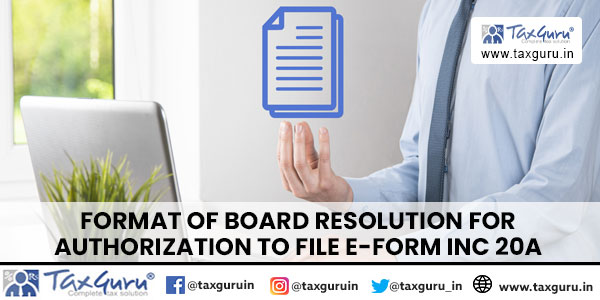
Format of Board resolution for Authorization to file e-Form INC 20A

IBBI warns & Penalises IP for not representing CD before NCLT effectively
Featured posts.

CBIC extends due date of furnishing GSTR-1 for March 2024 to 12th April

Representation on deficiency in GST Portal functioning

GST recommends Extension of GSTR-1 due date to 12th April 2024

For Tax Filing – Analyze the Old and New Tax Regime

Auto-populate HSN-wise summary from e-Invoices into Table 12 of GSTR-1

Advisory on Reset and Re-filing of GSTR-3B of some taxpayers

CBDT Clarifies on Misleading Reports on HRA Claims

Financial Year end GST Checkpoints

Representation on Incorrect/Delay In Submitting Application U/S 12A(1)(ac)

Statutory and Tax Compliance Calendar for April 2024
The Federal Register
The daily journal of the united states government, request access.
Due to aggressive automated scraping of FederalRegister.gov and eCFR.gov, programmatic access to these sites is limited to access to our extensive developer APIs.
If you are human user receiving this message, we can add your IP address to a set of IPs that can access FederalRegister.gov & eCFR.gov; complete the CAPTCHA (bot test) below and click "Request Access". This process will be necessary for each IP address you wish to access the site from, requests are valid for approximately one quarter (three months) after which the process may need to be repeated.
An official website of the United States government.
If you want to request a wider IP range, first request access for your current IP, and then use the "Site Feedback" button found in the lower left-hand side to make the request.

IMAGES
VIDEO
COMMENTS
A management representation letter is a form letter written by a company's external auditors, which is signed by senior company management. The letter attests to the accuracy of the financial statements that the company has submitted to the auditors for their analysis. The CEO and the most senior accounting person (such as the CFO) are usually ...
A management representation letter is a formal document issued by senior management of an organization confirming the accuracy and completeness of financial information presented in the financial statements. It is a critical document that helps auditors or other parties to obtain reasonable assurance that the financial statements are reliable.
The management representation letter is a key audit evidence prepared at the completion of the audit process. It contains management's assertions regarding: Fair presentation of financial statements. Completeness of information provided to auditors. Proper accounting policies used.
Appendix A - Illustrative Management Representation Letter.16 . 1. The following letter, which relates to an audit of financial statements prepared in conformity with generally accepted accounting principles, is presented for illustrative purposes only. The introductory paragraph should specify the financial statements and periods covered by ...
Reliance on Management Representations.02 During an audit, management makes many representations to the au-ditor, both oral and written, in response to specific inquiries or through the fi-nancial statements. Such representations from management are part of the audit evidence the independent auditor obtains, but they are not a substitute
A management representation letter is a form letter written by a company's external auditors, which is signed by senior company management. The letter attests to the accuracy of the financial statements that the company has submitted to the auditors for their analysis. The CEO and the most senior accounting person (such as the CFO) are ...
Management representation is a letter issued by a client to the auditor in writing as part of audit evidences. The representations letter covers all periods encompassed by the audit report, and is dated the same date of audit work completion. It is used to let the client's management declare in writing that everything is MRL and is sufficient ...
The preparation of a management representation letter is a meticulous process that requires careful attention to detail and a comprehensive understanding of the company's financial affairs. It is a collaborative effort between management and auditors to ensure that all significant information is accurately reflected.
The letter needs to be signed at the end of the engagement generally after a draft of the financial statements are issued. Schwindt & Co combines the representation letter with the management letter comments and proposed adjusting journal entries for ease of review. When the signed document is received by our office, we are then able to issue ...
Written Representations about Management's Responsibilities . 20. The auditor shall disclaim an opinion on the financial statements in accordance with ISA 705 if: (a) The auditor concludes that there is sufficient doubt about the integrity of management such that the written representations required by paragraphs 10 and 11 are not reliable; or
The management representation letter also mentions any contingent liabilities and its disclosure is also necessary to be mentioned in the letter. The recording of any material transactions is also mentioned in the management representation letter and it's necessary to mention that all these transactions were properly recorded.
A Management Representation Letter is a document written by the management of a company and provided to its auditors. This letter is part of the audit process and it's typically required at the end of an audit engagement. The purpose of a Management Representation Letter is to confirm the accuracy and completeness of the information that ...
A representation letter is a written statement provided by a company's management to its auditors as part of the audit process. The representation letter confirms that the information provided to the auditors is complete, accurate, and fairly presented in accordance with the applicable financial reporting framework.
In conclusion, ISA 580, which revolves around the Management Representation Letter, is a comprehensive framework that ensures transparency, accountability, and reliability in the audit process. By covering all 19 points detailed in the standard, auditors can effectively navigate the complexities of this critical document.
ISBN 978-1-78363-937-3. AUDIT AND ASSURANCE FACULTY TECHNICAL RELEASE 04/02AAF. MANAGEMENT REPRESENTATION LETTERS: Last updated 27 Mar 2018. This guidance was issued by the Audit and Assurance Faculty of the Institute of Chartered Accountants in England and Wales in November 2002 and updated in March 2018. The purpose of this guidance is to ...
In the world of assurance engagements, a management representation letter is a formal document that represents management's agreement with the financial statements that are being audited or reviewed. This letter is a critical part of the assurance engagement process and is required by the auditor or reviewer as evidence that management ...
A management representation letter is a specialized letter written by a company's external auditors and then signed by the senior company management. The date of the document cannot be later than the date at which the audit finishes. The letter verifies that the information provided is accurate and disclosed to the auditors.
A representation letter is a form of written representation obtain from a client. Written representations are audit evidence that auditors collect. Similarly, they are necessary information that auditors may require related to a specific audit assignment. These are similar to audit inquiries but in a written form.
A "rep" letter is the audit teams' formal evidence that management understands their responsibilities and that management has performed all of their responsibilities. Management should provide the auditor with a representation letter in writing that outlines the following characteristics: A) Managements acceptance for its responsibility ...
Management Representation Letter Format: A management representation letter format is a formal document used by auditors to obtain written confirmation from management about certain financial and non-financial matters.The Business letter is an important part of the audit process as it helps auditors gain a better understanding of the client's business operations, accounting policies, and ...
What is a Management Representation Letter. We know that generally accepted auditing standards (GAAS) require auditors to obtain written representations from their clients' management team, as part of audits of financial statements and periods covered by the auditors' reports. The specific written representations will depend on the individual ...
Release of the auditor's report to management. After all questions have been asked and answered, including confirmations of anything that the auditors needed to check, the final step is that the auditors will sign and date the report, and deliver it to the board of directors with a client representation letter, the same date as the audit report.
Sub: Management Representation in course of Statutory Audit for F.Y. 2021-22. This representation letter is provided in connection with your audit of the financial statements of M/s Private Limited, Delhi for the year ended March 31, 20XX for the purpose of expressing an opinion as to whether the financial statements are presented fairly, in ...
Employee representation is vital to thorough and effective OSHA inspections, and OSHA finds these changes will improve the effectiveness of OSHA inspections and benefit employees' health and safety. ... OSHA explained that the Racic letter merely stated that a non-employee who files a complaint does not necessarily have a right to participate ...